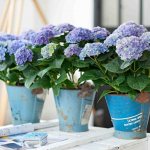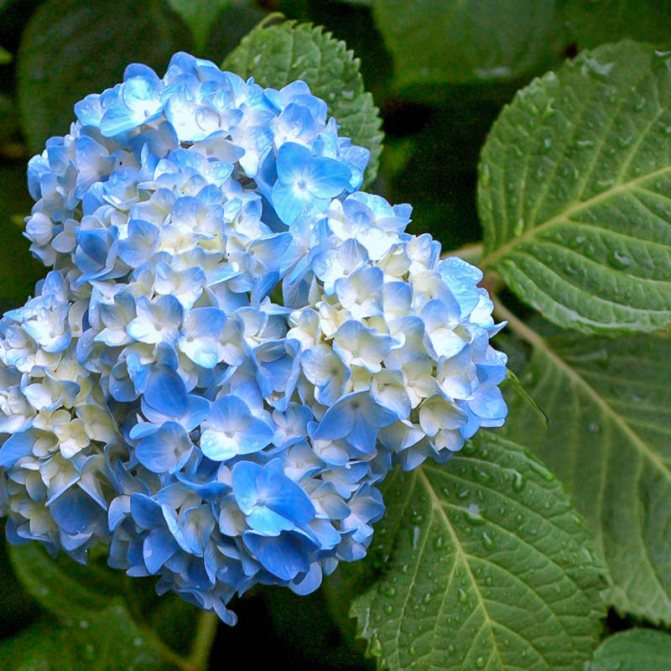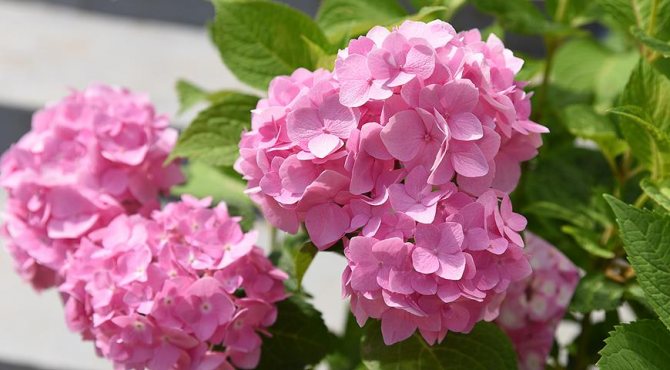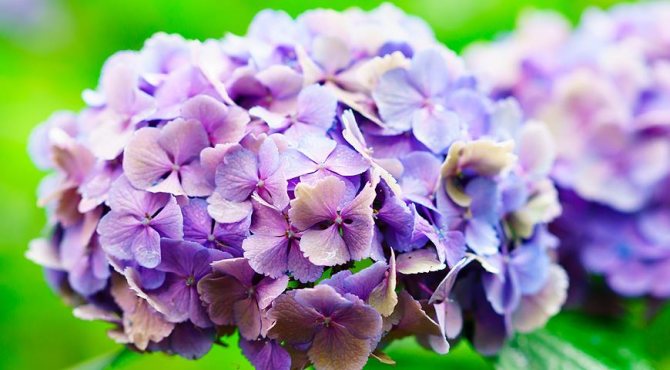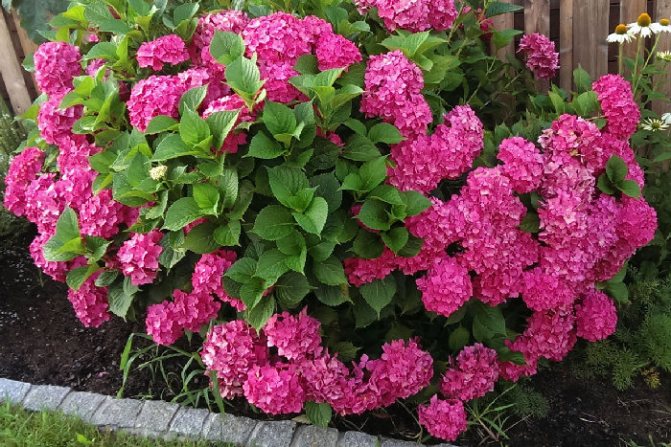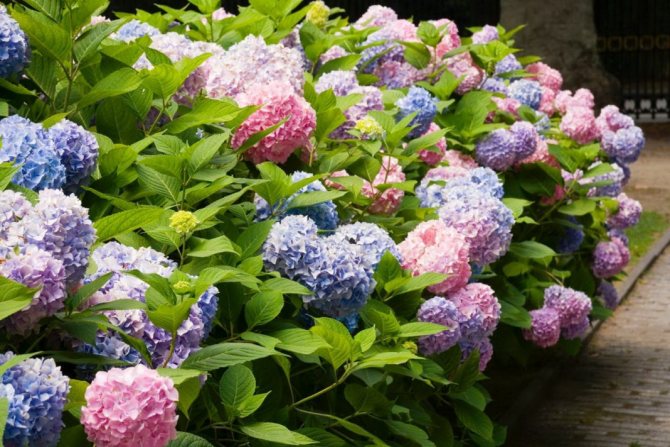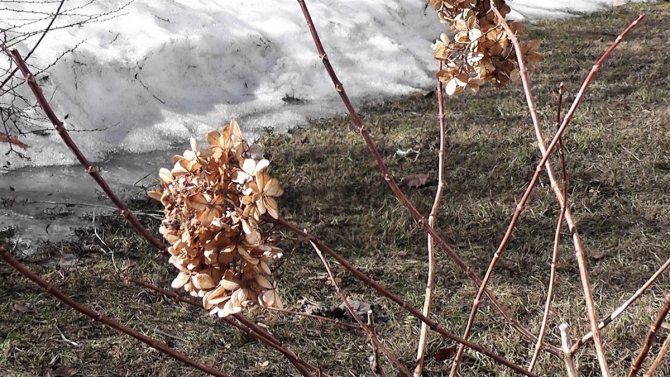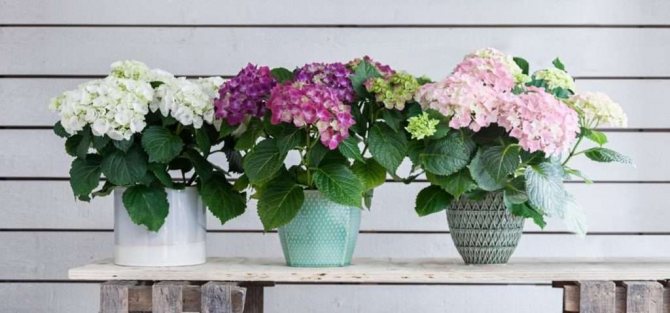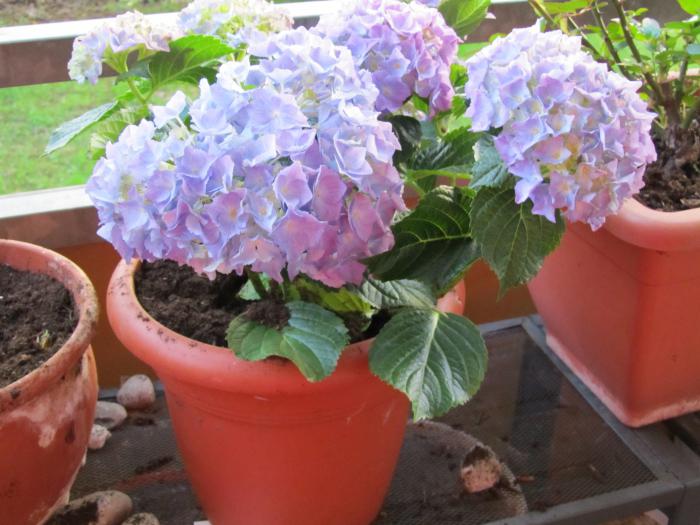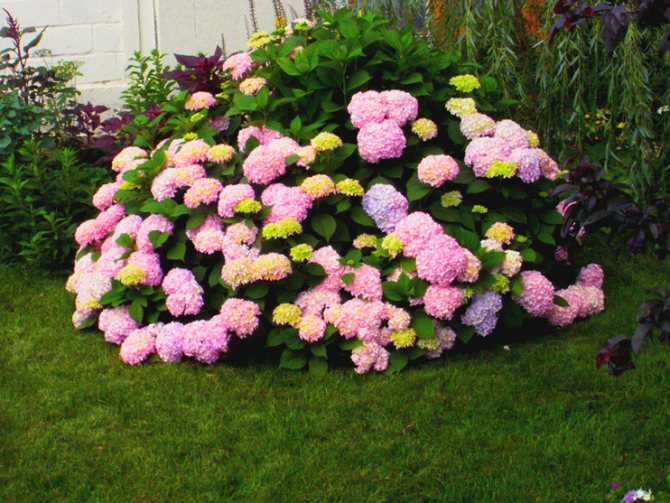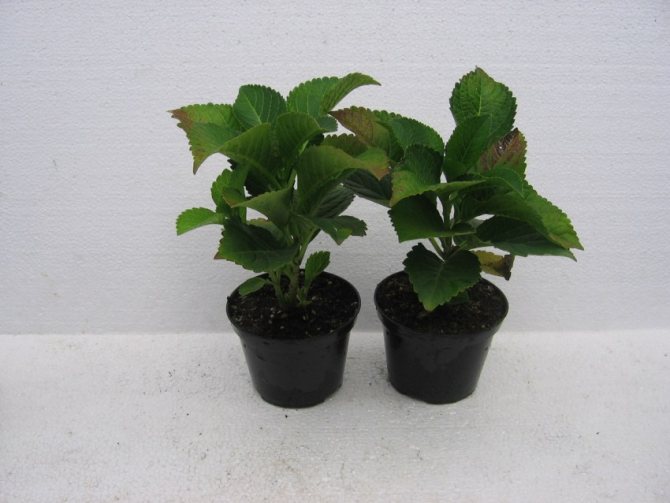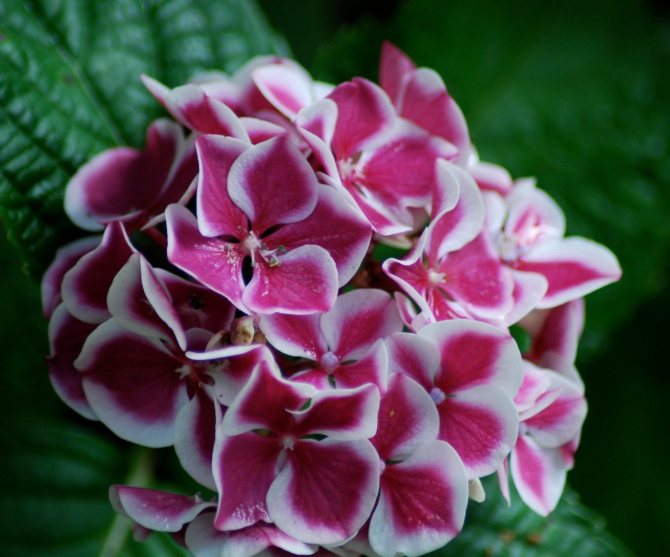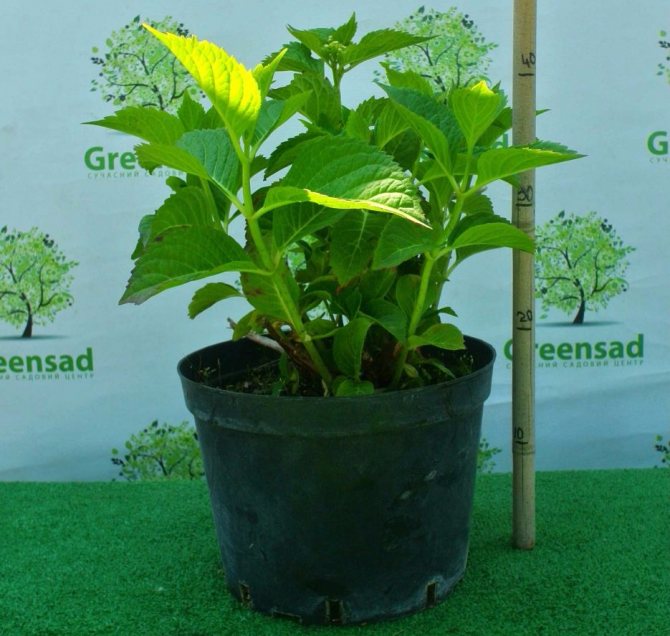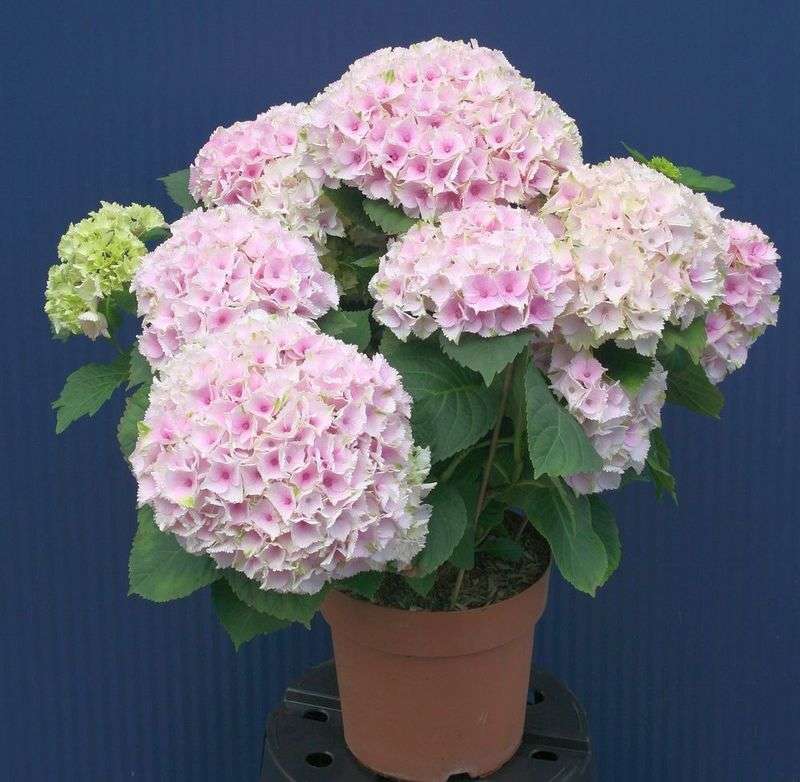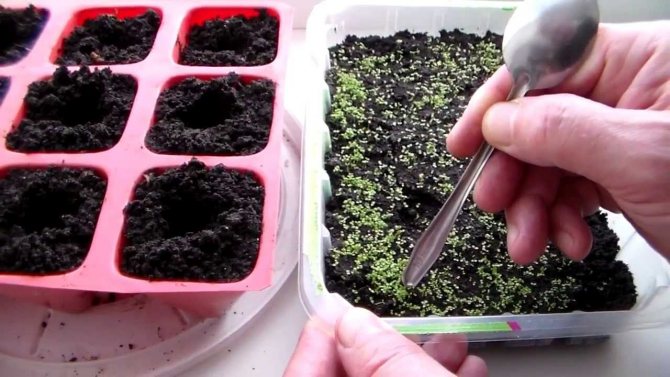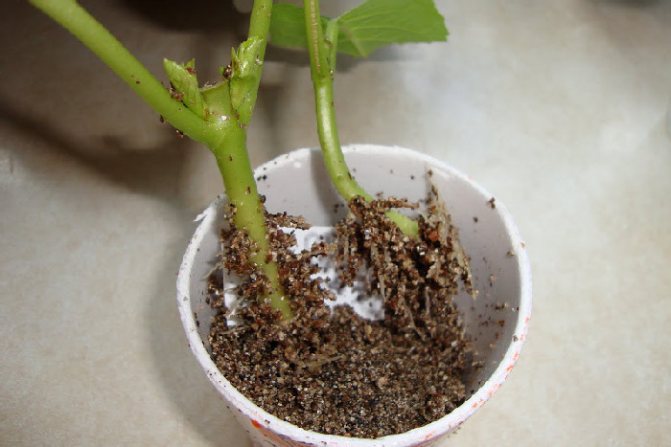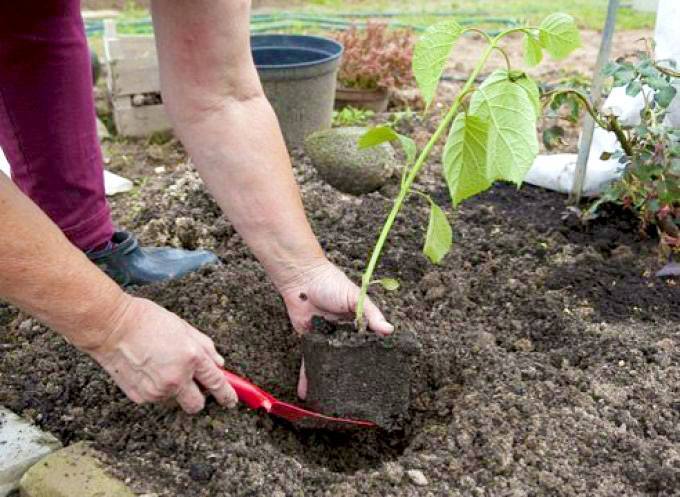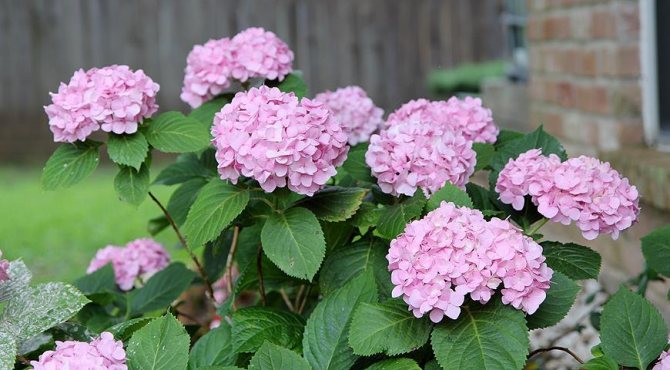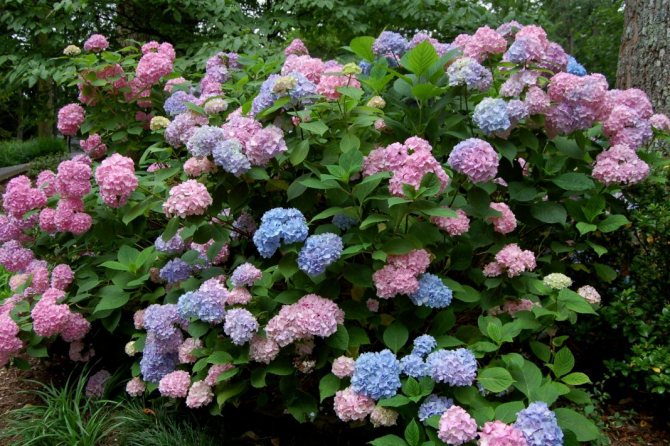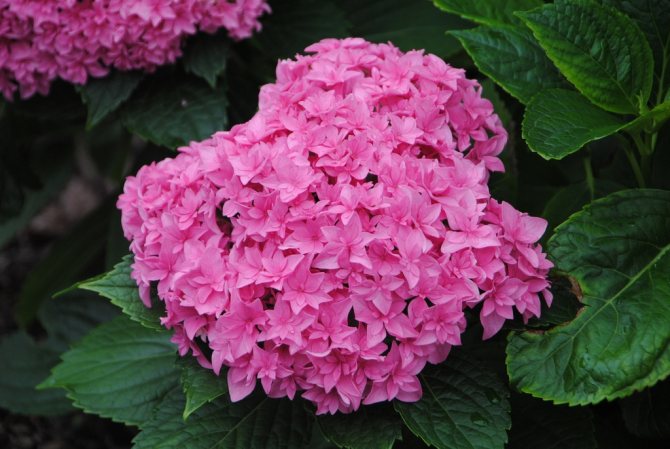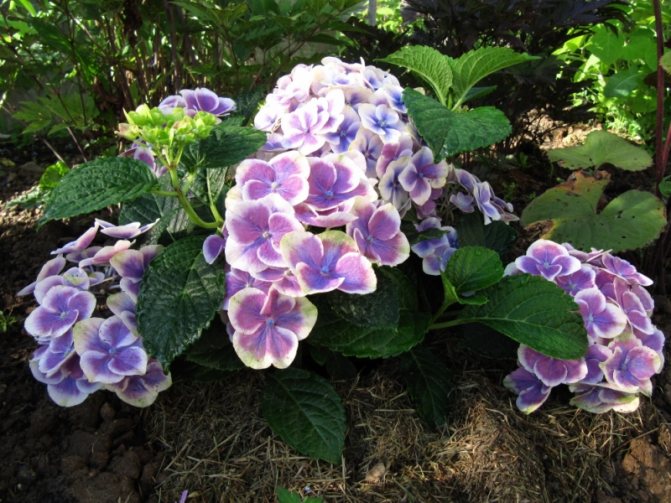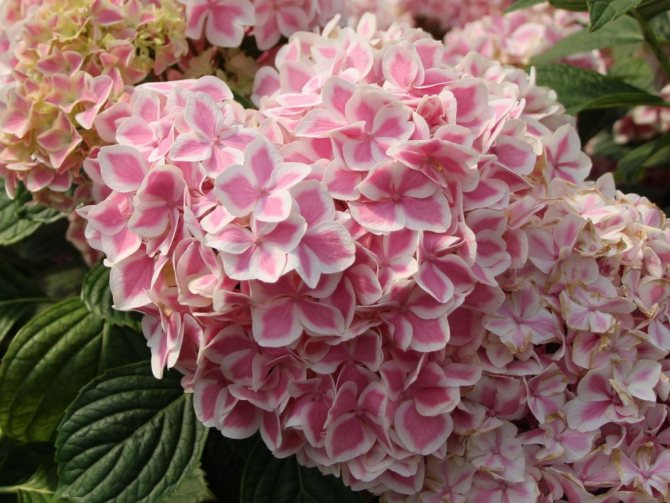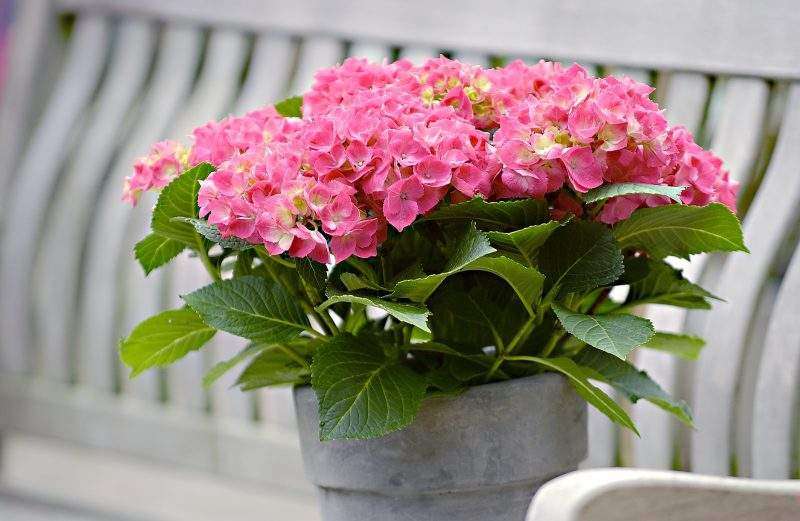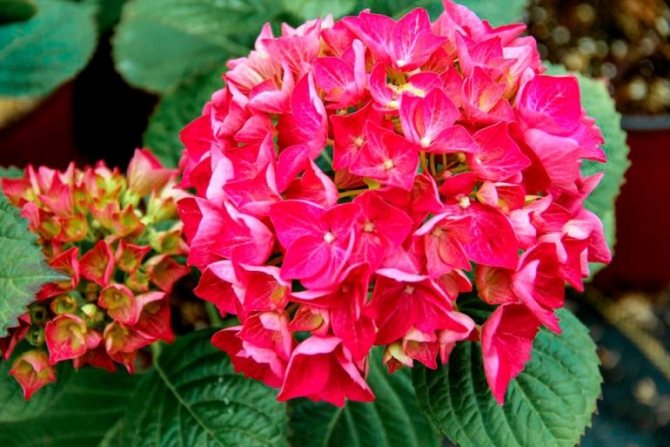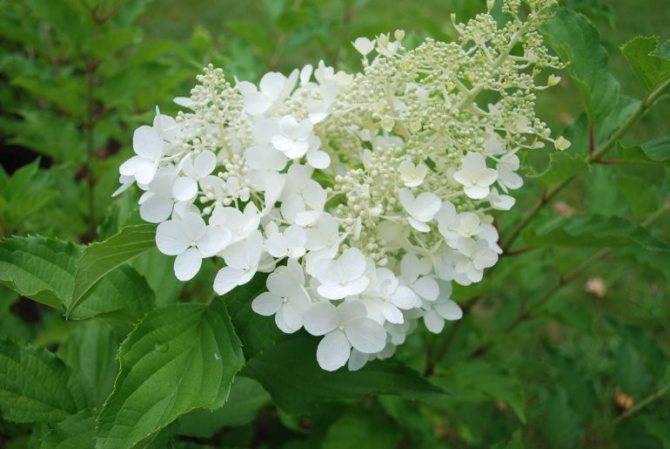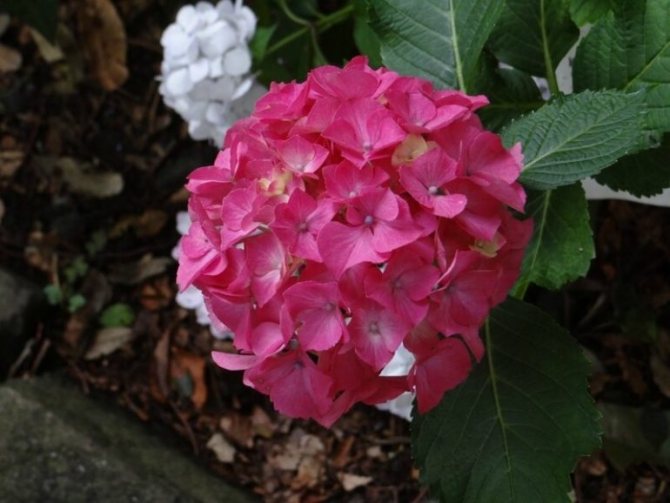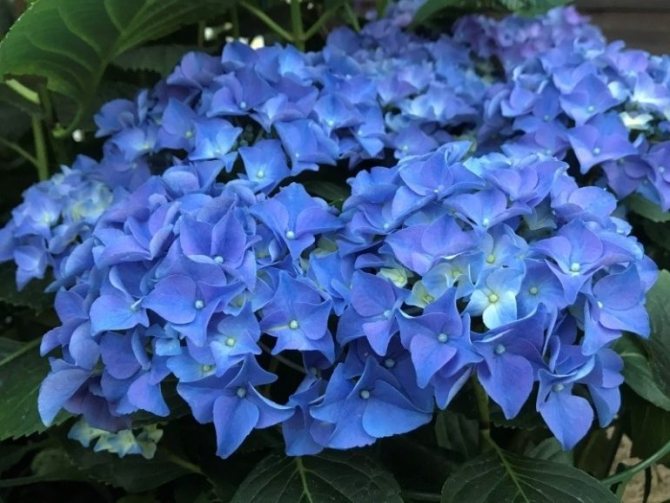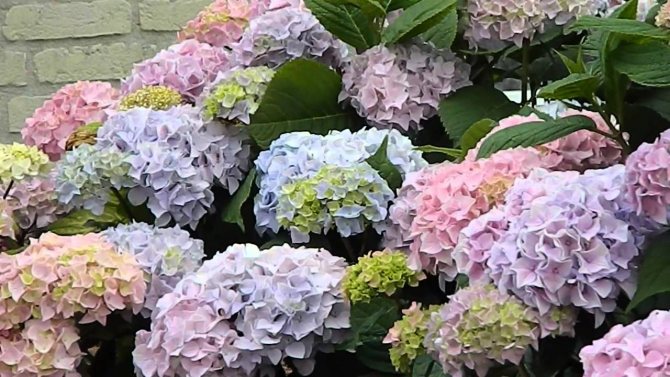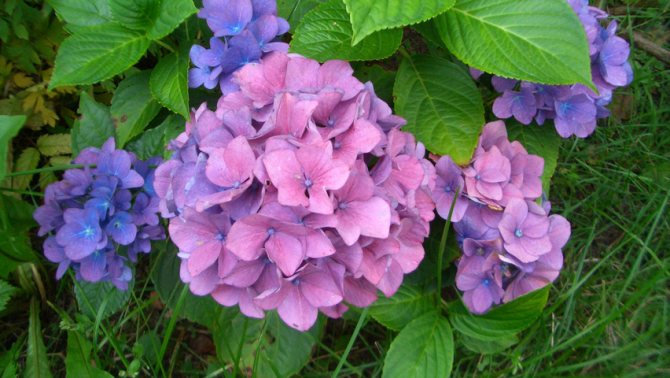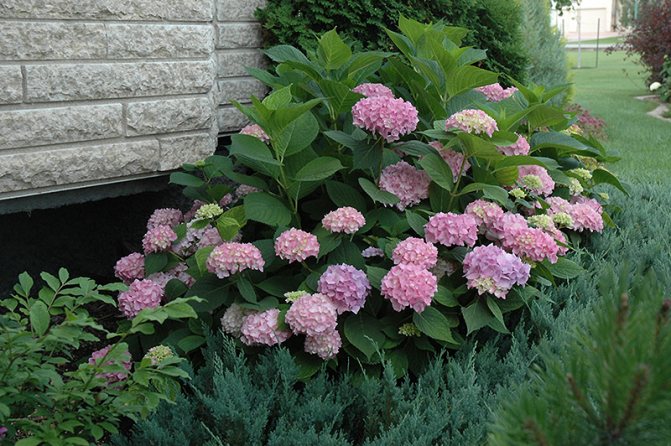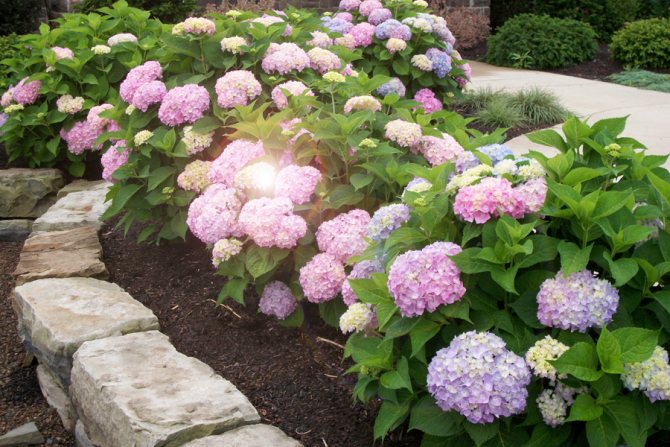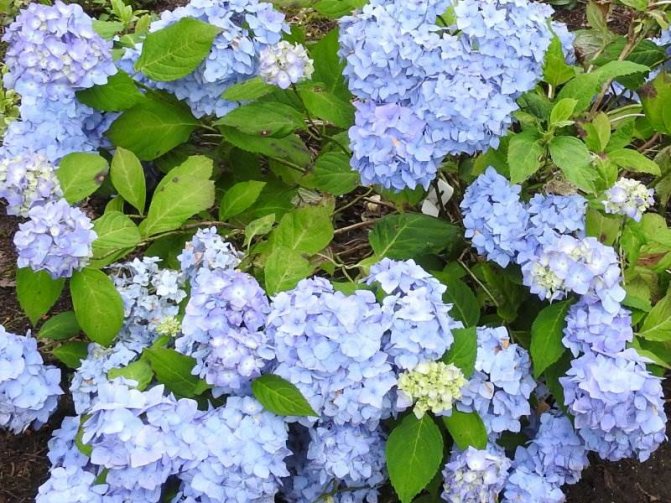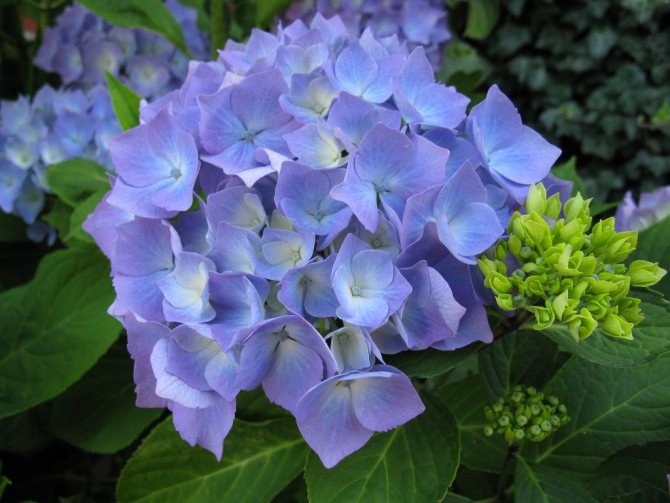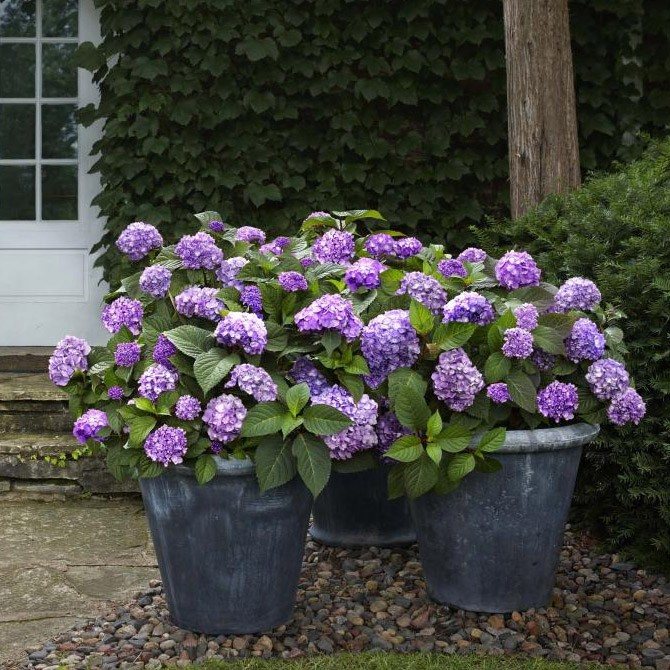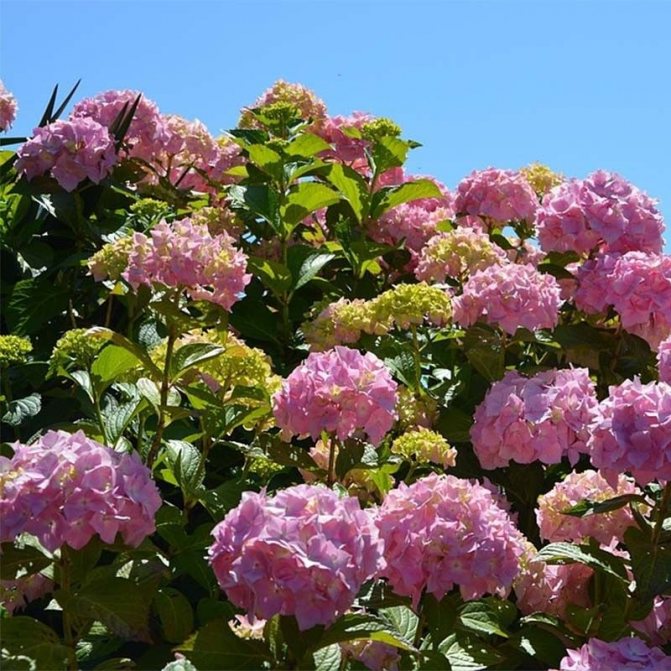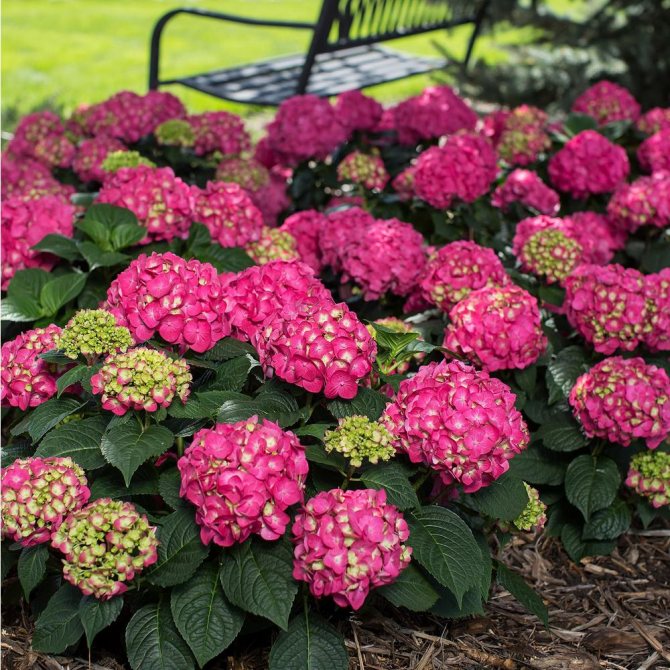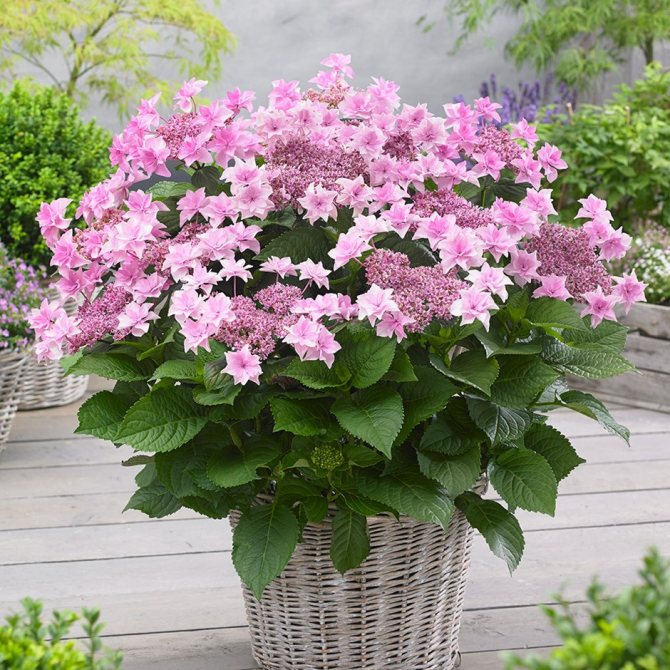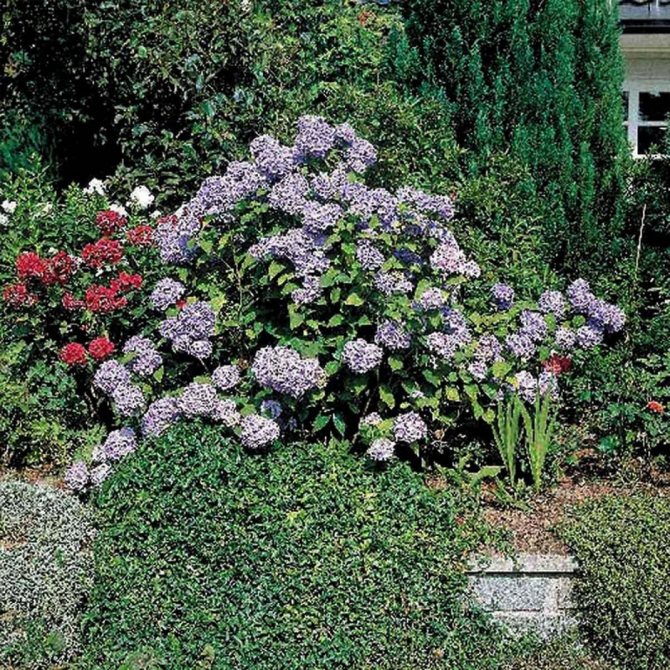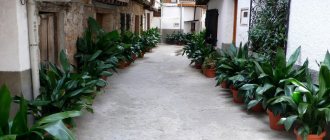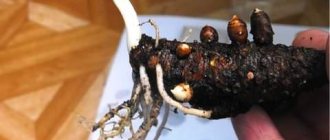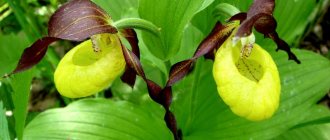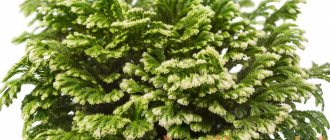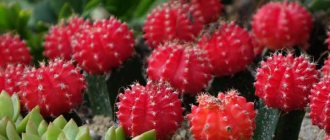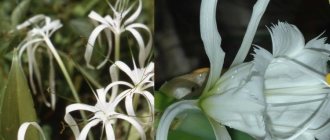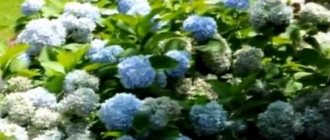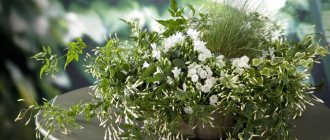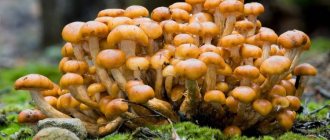Large-leaved hydrangea (Hydrangea macrophylla) - grows into a real shrub in favorable places for growth. Hydrangea is also called hydrangia, which is translated from Greek as a vessel with water, which suggests that hydrangea is a moisture-loving plant. In total, there are 80 types of hydrangeas in the world, common in America and East Asia.
At the end of the 19th century, hydrangea was brought from Japan to Europe, where its triumphant march began. It was in Europe, namely in France, that large-leaved hydrangea varieties were bred. But, unfortunately, the large-leaved hydrangea is less winter-hardy compared to other species, for example, the petiolate hydrangea. Therefore, when growing large-leaved hydrangea in gardens in central Russia, you should know that it practically does not hibernate without winter shelter.
The leaves of the large-leaved hydrangea are large, ovate, opposite, in spring and summer they are bright green, by autumn they begin to turn red, so that the hydrangea bush remains decorative for almost the entire season.
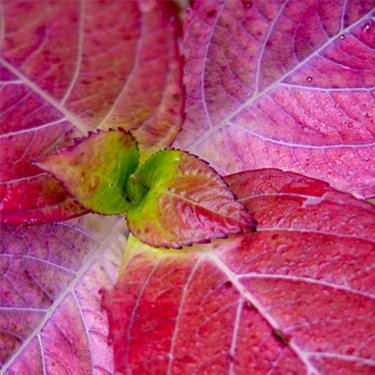
Hydrangea flowers large, about 3 cm in diameter, mostly pink in color, collected in large corymbose inflorescences up to 15 - 20 cm in diameter. In new varietal forms of hydrangea, flowers can be white, pink and even blue. Hydrangea blooms in July, but the flowers do not fall, but only become slightly greenish and remain on the branches until next spring. Hydrangea is a very ornamental plant, it is not for nothing that many flower growers have fallen in love with it.
Large-leaved hydrangea used to be grown mainly only as a house pot plant. But with the development of new frost-resistant varieties, it became possible growing hydrangeas in the garden.
Indoor hydrangea: more capricious, but no less beautiful
Luxurious pastel hydrangea caps are equally impressive on garden bushes and much more modest potted plants. The flowering of hydrangeas - their main advantage - can be fully appreciated regardless of the form of cultivation. After all, the greenery of hydrangeas, although irresistible in its own way, still does not distinguish this shrub from the total mass of plants. Moreover, for the winter hydrangea loses leaves. These hygrophilous beauties with a special "elite" status grow well in the home format. They require very careful selection of temperatures, and in general they are demanding on conditions and care, but they also have few competitors.
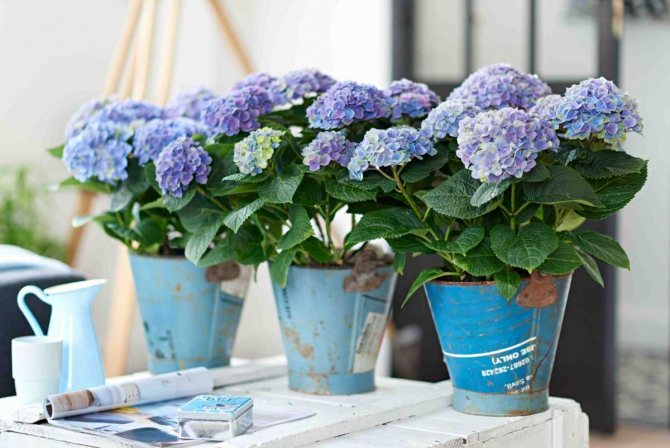

Indoor hydrangea is more capricious, but no less beautiful.
Reproduction
There are several ways to propagate an ornamental shrub:
- Seeds and shoots... But these methods are very laborious, only in the third year the seedlings can be placed in open ground. Therefore, ordinary gardeners do not use them.
- Green cuttings... They are cut from young specimens early in the morning, when the plant tissues are filled with moisture and placed in a bucket of water. The top is cut off from the cutting, the lower leaves are removed, leaving a couple of pieces on top. It is placed in a solution of a root growth stimulator and kept there according to the instructions. After all the manipulations, the cuttings are planted in beds consisting of peat and sand, and watered every day or every other day. If all the technology is followed, then after 25-30 days the seedling will have leaves.
- Layers... In early spring, the lower stems should be sprinkled with humus and watered. Roots will appear on them during the summer. And in autumn, young plants need to be disconnected from the mother plants and planted in a permanent place.
Do not forget that on young broad-leaved hydrangia flowers will appear only in the second year.
What is an indoor hydrangea like?
The beautiful hydrangea, which came to us from the mild subtropical climate of China, has long become a true favorite of gardeners. But hydrangeas are valuable both for floristry and as live bouquets in a potted form. Moreover, in the latter version, they are used not only to decorate the garden, but also as a houseplant. True, only one type of hydrangea can be called indoor - the large-leaved hydrangea.
Large-leaved indoor hydrangeas (Hydrangea macrophylla) are rarely called hydrangea or hydrangea large-leaved by their scientific name, although it is familiar to any gardener. These representatives of the family of the same name (Hydrangeaceae) are large deciduous shrubs, in rooms they are limited to much more modest sizes.
The leaves of hydrangeas are large, light colored, with a muted light green-herbaceous shade. They sit on the shoots in the next order. Their egg-shaped shape with a beautiful pointed tip only emphasizes their subtlety, beautiful matte texture and their ability to glow in the sun.
Bushes, with proper care, seem thick, although, of course, the feeling of a luxurious mass of foliage from hydrangeas is not. The size of the leaves ranges from 10 to 15 cm; the large-leaved hydrangea justifies its name.
The natural height of indoor hydrangeas is from 1 to 1.5 m. But thanks to treatment with inhibitors in flower centers or proper formation, the plants are kept much more compact.
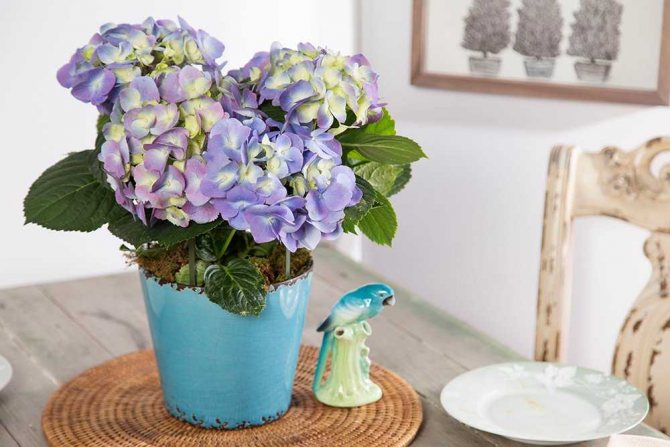

Indoor hydrangeas do not bloom at the same time as their garden counterparts.
Large-leaved hydrangea varieties: photo and description
The table shows the names of varieties of large-leaved hydrangea (everyday and scientific):
| Variety name in Russian | Variety name in Latin | Variety name in English | What soil grows best | In which areas are they grown |
| Hydrangea large-leaved bodensee | Hydrangeamac Macrophylla Bodensee | Bodensee | Sour, slightly acidic | In the southern regions, Non-Black Earth Region |
| Hydrangea aisha large-leaved | Hydrangeamac Macrophylla Ayesha | Ayesha | Low in lime. | In the southern regions, Non-Black Earth Region |
| Hydrangea large-leaved bouquet rose | Hydrangea macrophylla Bouquet Rose | Rose's Bouquet | Well fertilized | In the southern regions |
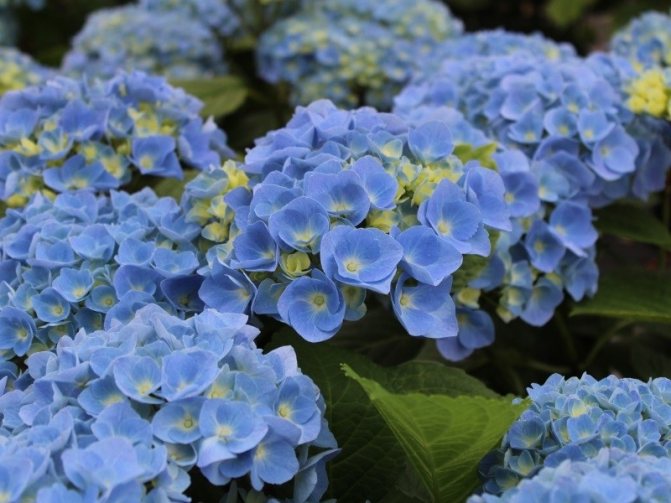

Hydrangeamac Macrophylla Bodensee
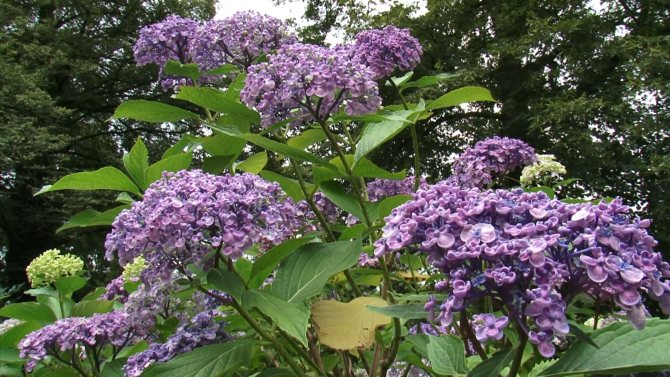

Hydrangeamac Macrophylla Ayesha
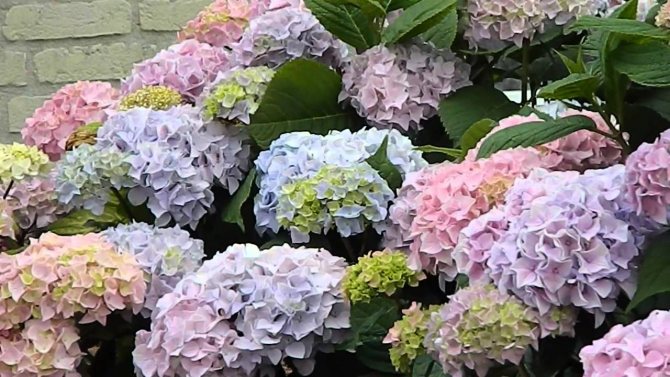

Hydrangea macrophylla Bouquet Rose
The inimitable bloom of indoor hydrangeas
Indoor hydrangeas do not bloom at the same time as their garden counterparts. Unlike the garden beauties who love mid-summer, large-leaved indoor hydrangeas begin the parade from February-March and finish their flowering by July. Plants are amenable to distillation, so blooming hydrangeas can be found on sale at other times. By changing the dormant period, you can also regulate their flowering in a home format.
The shape of the inflorescences in indoor hydrangeas can differ significantly even within the same species. There are varieties with inflorescences that resemble perfect balls, there are hydrangeas with flat caps, and there are also multilevel shields. They differ both in the density of the arrangement of flowers and in the size of the inflorescences - from 5 cm in miniature varieties to more than 20 cm in classic beauties.
In the inflorescences, large sterile flowers are located at the edges, as if closing over the fruiting ones, but in varietal plants the shields seem to be solid and the difference is not noticeable.
Actually, the flowers of hydrangeas are inconspicuous. They are miniature, like a small bead against a background of much brighter, diamond-shaped petals of flat and brightly colored bracts. Hydrangea flowers with their four petals seem almost papery.
The color palette of indoor hydrangeas is somewhat expanded in comparison with large-leaved garden hydrangeas. The thing is that flower centers use different tactics and enhancements, and color changes by artificial treatments that cause pigmentation. Thanks to them, the bush on the counter can surprise with its bright blue, light green and even yellow color.But such unnatural beauties will not be able to please you for a long time and are unlikely to last for the next year.
The natural range of indoor hydrangeas includes white, pink, purple and blue spectra in the softest, pastel variations.
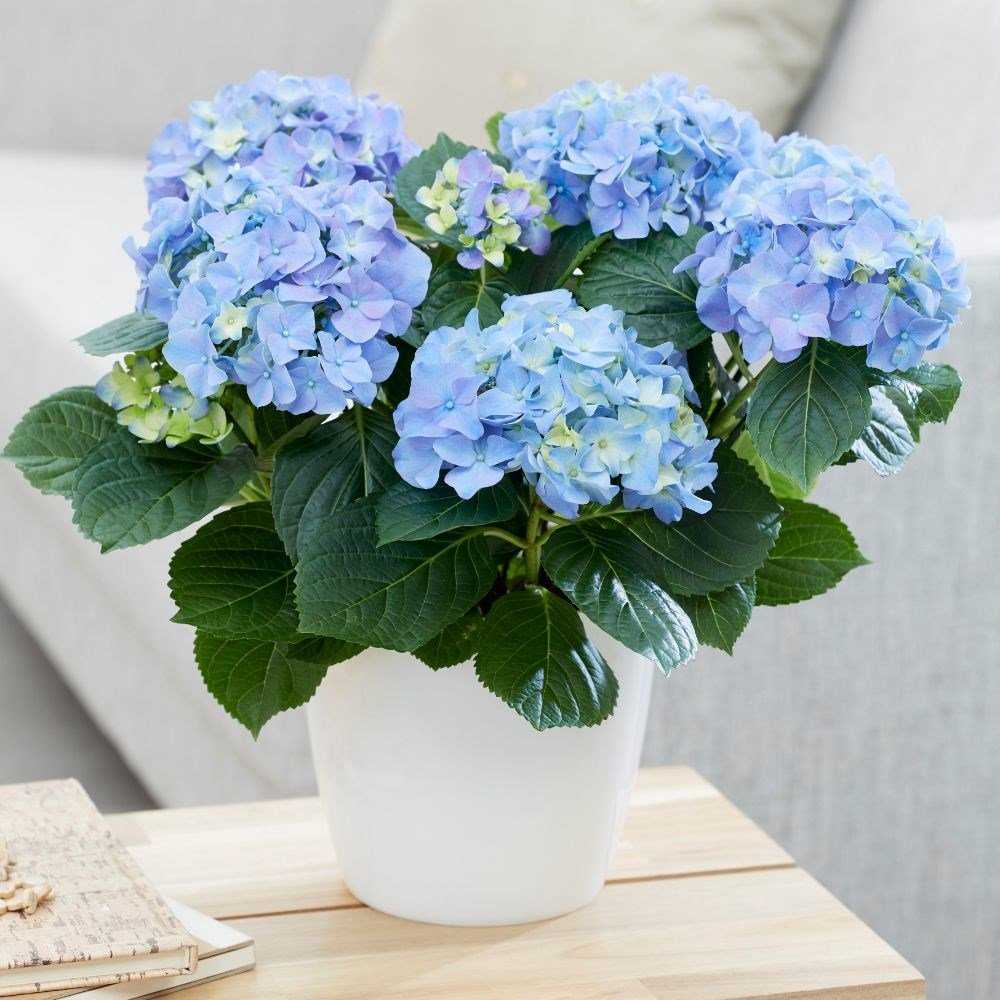

Hydrangea large-leaved 'Early Blue'.
The history of the flower and its biological description
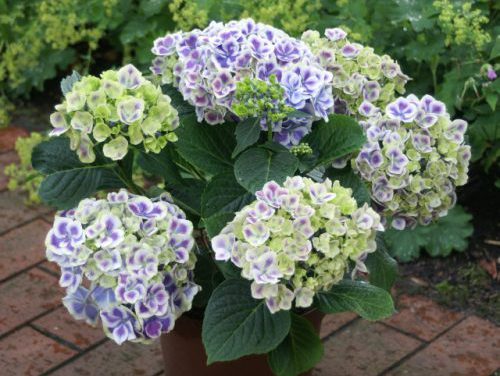

Hydrangeas are an extensive genus of the Hortensian family, including, according to the latest data, 52 different species.
It is noteworthy that the real botanical name of the genus is Hydrangea, and the flower was named after the princess Hydrangea. In many sources she is called "the sister of the Prince of the Holy Roman Empire", or even worse - "the Roman princess, about whom no one remembers." In fact, her brother, Karl Heinrich of Nassau-Siegen, was a Roman prince, as they say, only “on paper”. After all, he lived in France in the second half of the 18th century, and even at the beginning of the 19th century, when there was no Holy Roman Empire for a long time.
Nasau-Siegen was a member of the French round-the-world expedition of Louis de Bougainville (yes, a popular houseplant was named after him!), Once saw a luxurious flower on an island in the Indian Ocean, and immortalized in its name the name of his beloved sister. By the way, distracting from the "flower" theme, read the biography of this amazing person at your leisure! He was friends with Catherine II and Potemkin, with the kings of Poland and Austria, turned out to be the first owner of Massandra in the Crimea, participated in wars on almost all continents, seduced the daughter of a leader of one of the tribes on an island in the Pacific Ocean, and died on his estate on the territory present-day Ukraine.
Hydrangeas can be shrubs, small vines, and even trees. Their homeland, in all likelihood, is the territory of modern Southeast Asia. These flowers gained particular popularity in Japan, from where, in fact, they came to Europe. There was a time - the Japanese even restricted the entry of Europeans into their territory so that they would not export the hydrangea outside the islands.
Now hydrangeas are very common garden flowers, more and more often they can be found in rooms. Hydrangea decoration - huge, ball-like inflorescences of white, pink, blue. Nowadays, the color range, thanks to the efforts of breeders, has been significantly enriched.
Varieties of indoor hydrangeas
It is better to choose indoor hydrangeas not by the name of the variety, but by the size of the bushes and the color of the inflorescences. Among them you can find both the brightest and most extravagant monochromatic versions of colors, as well as charming watercolor, unevenly repainted cultivars.
The following varieties have become real classics for room culture:
- Compacta Is a low-growing variety with very bright, densely spaced leaves and ball-like inflorescences that change watercolor shades of pink.
- Blushing bride - a beautiful variety with delicate cream shades of flowers and dark leaves, well-branched and medium-sized.
- Ramars mars - a compact, undersized variety with very unusual lilac-blue inflorescences, which are repainted from light green to blue and lilac, darkening over time.
- Early blue - a very beautiful variety in which light green inflorescences gradually turn blue.
- Nikko Blue - a variety with globular inflorescences, which, under the right conditions, can acquire an amethyst shade of dark blue color. The bushes are very sprawling, often drooping to one side.
- Europe - one of the most beautiful bluish-purple varieties with irregularly colored watercolor flowers and very dark, emerald green, heart-shaped, wrinkled leaves.
- Madame E. Mouillere - an unusual narrow-leaved variety with double flowers from three rows of "petals" with a bluish bloom in the center.
- Soeur therese - an elegant variety of white varieties with light lilac and heavenly tints similar to the balls of inflorescences.
- Red link - a warm pink dwarf variety with light yellow centers of newly opened flowers, which seems more graceful due to the slightly loose structure of the inflorescences.
- Magenta - bright pink, with a raspberry shade of large 30-centimeter inflorescences hydrangea with an unusual cut edge of the "petals". The bushes are powerful, about 70 cm high.
- Red sensation - burgundy, rich raspberry variety, which, when grown on acidic soil, becomes wine and purple. Very bright greenery and smaller foliage create a curly effect.
- Prime - a charming pink-red hydrangea with an original yellow color of the buds. Flat inflorescences, as if a continuous shield, lie on very short stems and a cushion of matte dark green leaves. The maximum height is about 25 cm.
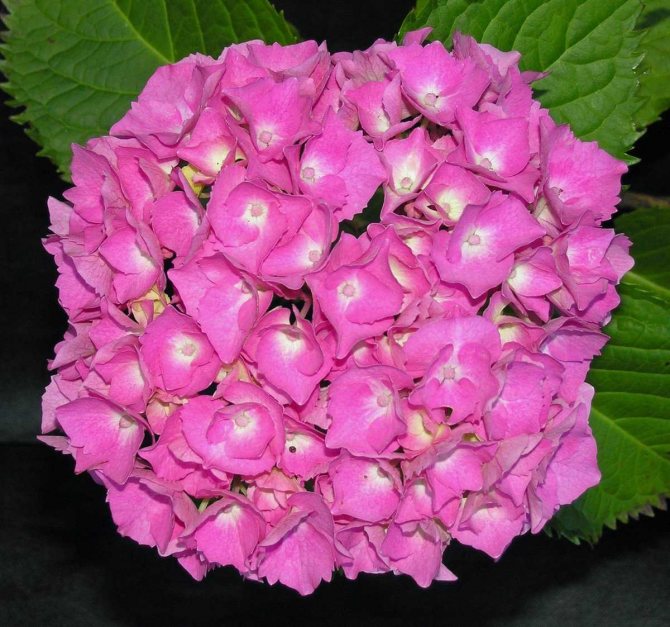

Large-leaved hydrangea 'Europe'.
Preparing for winter
The biological feature of hydrangia is that flowering buds are laid on the stems of the second year of life. Therefore, the plant needs good protection from winter cold, shelter in several layers. In September, the leaves are removed from the bottom of all shoots, and in October - to the middle of the stems. A bucket of peat is poured under each bush.
In November, spruce branches are laid on the garden bed, the plants are tilted up to it and pinned, then covered with several layers of non-woven materials. Dry leaves are poured on top, roofing material and boards are laid so that in case of strong winds the structure does not collapse. If thaws are frequent during the winter, then hydrangea is slightly opened on such days.
Lighting and placement
Even in rooms, hydrangea can grow not only in a brightly lit place, but also in partial shade. Of course, hydrangeas cannot stand strong shading, but diffused light is quite comfortable for them.
Most hydrangeas that do not form into dwarfs do not fit well on windowsills over time. It is quite possible to place them both on furniture and outdoor not far from the window. Bushes cannot stand direct sunlight, they very quickly lead to a loss of decorativeness of inflorescences and foliage.
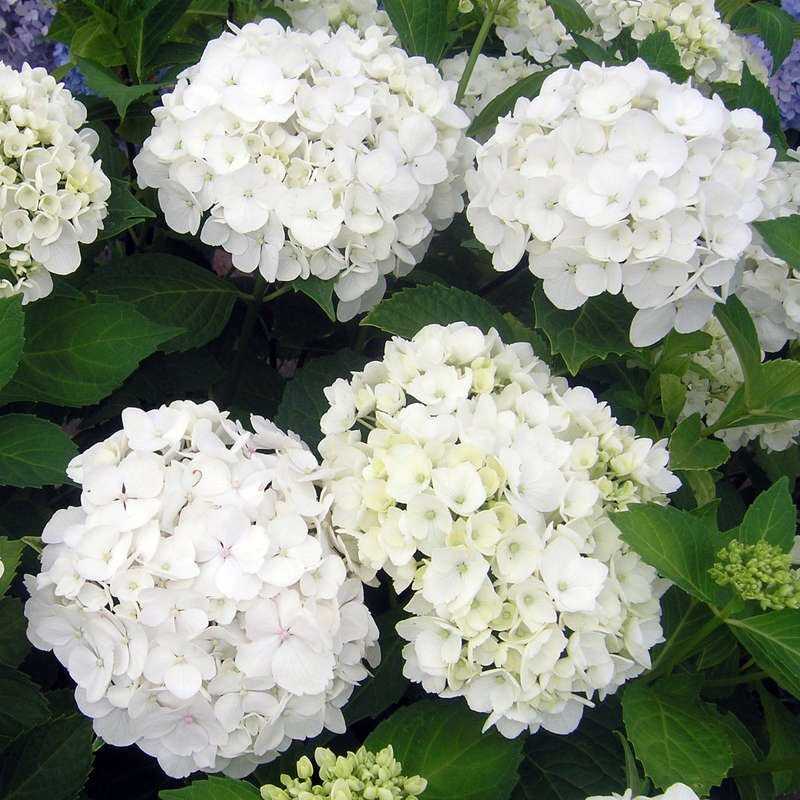

Hydrangea large-leaved 'Soeur Therese'.
During flowering, it is better to make sure that the lighting remains soft and unchanged, and the hydrangeas do not change their orientation in relation to the window: turning, moving can be perceived by the plant as stress and cause accelerated fading.
Lighting during the dormant period for hydrangeas is important, but not in the sense that it is for ordinary indoor plants: hydrangeas should be placed in a dark place or put on caps on bushes, protecting them from light. True, only after dropping the leaves. "Naked" hydrangeas are returned to light only after the beginning of the swelling of the buds.
Indoor hydrangeas are plants that overwhelm their neighbors. They are so massive and attractive that few houseplants are capable of not losing their charm next to them.
But a negative influence is not uncommon: hydrangeas next to crops with glossy leathery leaves, impeccable shapes can seem more sloppy and lose some of their aristocratic charm. Therefore, it is better to expose them as living bouquets of soloists, beautiful single decorations. Except, of course, for the company of other hydrangas.
The most resilient series of large-leaved hydrangeas
Repaired varieties of large-leaved hydrangeas are positioned as the most winter-hardy. Their distinctive feature is two waves of flowering due to the rapid maturation of the buds of the current year. Repaired varieties are combined into several series. The most popular ones are:
- Endless Summer series (abbreviated ES);
- the Forever and Ever series (abbreviated FE), created on the basis of the Early Sensation variety, more frost-resistant than ES;
- series You and Me (abbr. YM), almost all varieties of the series are terry.
Temperature control and ventilation
Moving to closed living quarters, hydrangeas become less resistant to temperatures.They need mild conditions and stable cool temperatures, reminiscent of a cozy garden partial shade under the trees.
Hydrangeas look, develop and bloom best of all, which from March to October stay in moderate room temperatures no higher than 20 degrees. A range of 18 to 20 degrees is fine for them. The higher the temperature, the faster the hydrangeas will bloom and the less they will reveal the beauty of their leaves.
The dormant period for hydrangeas should be cool. The maximum allowable temperature for wintering a plant is plus 10 degrees. Optimal - about 5 degrees Celsius. Only after wintering in the coolness can hydrangeas bloom, and the quality of their flowering directly depends on comfortable and stable temperatures.
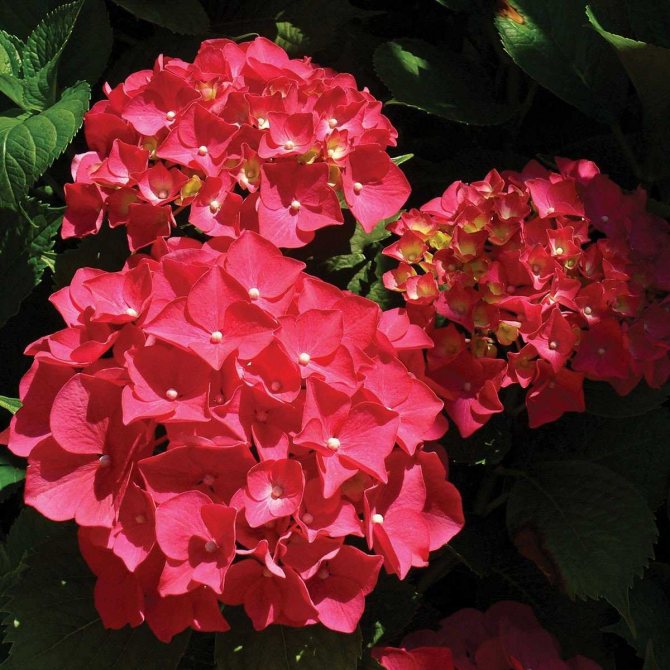

Hydrangea large-leaved 'Red Sensation'.
You can find a suitable place for indoor hydrangeas during wintering both in cellars, basements, cold greenhouses, and between frames or in a cold foyer.
Hydrangeas, as true garden plants, will not refuse to move under the open sky for the summer. It is not necessary to put them on balconies or in the garden, but it is highly desirable.
If you decide to leave the beauties in the room to admire their inflorescences, then they should not suffer from a lack of fresh air. Airing should be neat, and with constantly slightly open doors, it is worth taking measures to protect the bushes from drafts.
If hydrangeas are planned to be transferred into the soil or there is a large collection, they can also winter in the soil - dug in, under an air-dry shelter or together with garden tubs.
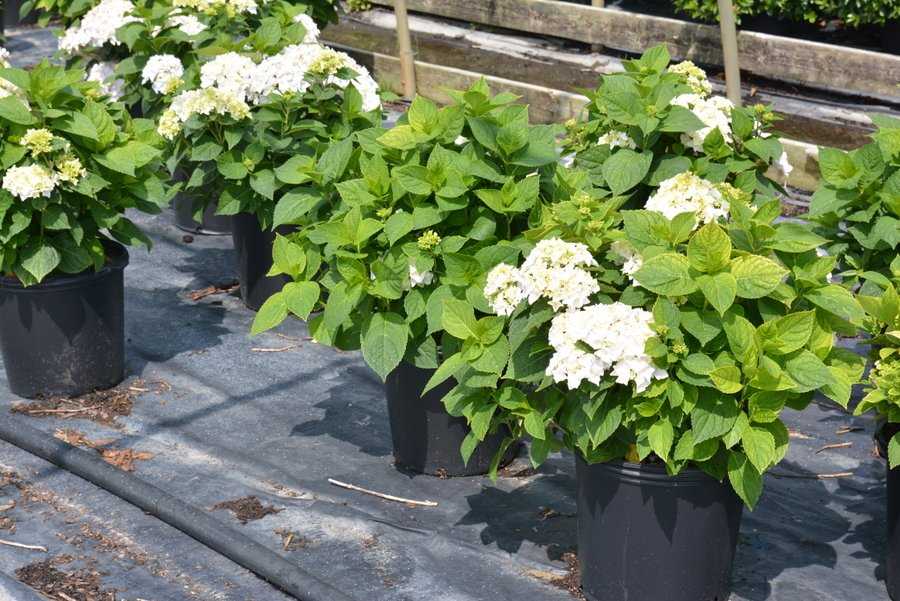

Hydrangea large-leaved 'Blushing Bride'.
Choosing a place for planting and preparing the soil
Hydrangia broadleaf light-requiring, prefers illuminated, open places. The gardener must not forget that the more shade, the later the ornamental shrub will bloom, the less the number of inflorescences and their size. But at the same time, it is not worth planting it on the very hell.
Since the flower stalks of the plant are fragile, and the inflorescences are quite massive, the large-leaved hydrangea is planted in a place protected from constant wind. But it should also not be placed under the trees, otherwise the hydrangia will not have enough moisture.
It is necessary to choose a site with slightly or moderately acidic soil, which has leaf, turf, peat, sandy components in a 1: 1 ratio. This soil is considered the best for large-leaved hydrangea. First, the soil is dug up and weeds are removed, and then they are planted.
Watering and air humidity
The substrate in pots with indoor hydrangeas should never completely dry out - even during the winter. In accordance with the decrease in temperature, watering is reduced, maintaining very light soil moisture with small portions of water.
During the period of active growth, indoor hydrangeas require rather active watering, between which only 2-3 upper centimeters of the substrate would dry out. In this case, it is important to avoid dampness, but to maintain an average, uniform humidity.
In the spring, when hydrangeas build up their leaf mass, they consume an astonishing amount of water, so watering is usually done more abundantly while they are actively growing.
Water quality for indoor hydrangeas must be monitored. It should warm up to the same temperature as the air in the room. For these shrubs, only soft water is suitable. If in doubt about its quality, it is better to slightly acidify the water to prevent alkalization. Hydrangeas grow well when watered with melt water.
Hydrangeas do not tolerate heat and love medium humidity. If temperatures exceed a comfortable range, in order to maintain the beauty of the leaves in the crown, it is better to take care of humidifying the air and maintaining humidity indicators at least within 55-60%. Hydrangeas can be sprayed with a foggy method, they will not give up all types and artisanal moisturizers.
Watering hydrangea
Water for watering hydrangeas should be soft, as they do not tolerate lime. Rainwater is most ideal. If there is no rain for a long time, then the tap water should settle, warm up. But be aware that with constant use of tap water, chlorosis of the leaves is still possible. Therefore, to soften the water when watering hydrangeas, periodically add lemon juice, vinegar, a drop of electrolyte. The introduction of iron salts into the soil, for example, ferrophyte, iron chelate, and ferrous sulfate, will help to avoid leaf chlorosis. remember, that hydrangea loves moisture very much: one bush per week should receive at least two buckets of water. During intermittent rains or when using mulch, you can water the hydrangea once a month.
Top dressing and fertilizer composition
Indoor hydrangeas are fed only from March, when the duration of daylight hours begins to increase, and continue to be carried out not only until the end of flowering, but also until the end of October to lay high-quality buds. The classic frequency of 1 every 2 weeks requires a halving of the fertilizer dosage.
If you use the full dose, then it is better to apply fertilizing every 3-4 weeks. It is worth gradually starting feeding in early spring and finishing in mid-autumn.
All hydrangeas, without exception, prefer special fertilizers for rhododendrons. For indoor beauties, you should not experiment with the composition of fertilizers, because even preparations for flowering shrubs are not suitable for them. By reducing the dose, you can use a special fertilizer for garden hydrangeas. Organic fertilizers for indoor plants are not applied.
The luxurious blue colors in indoor hydrangeas can only be preserved in the same ways as in garden hydrangeas - by maintaining the correct acidity of the soil. Special fertilizers for blue hydrangeas, containing aluminum or simple alum, which are added instead of the usual dressing, will help to enhance the much desired heavenly colors.
They are used according to the manufacturer's instructions, strictly observing both the dosage and the frequency of these procedures. But it is worth remembering that blue colors can only be achieved with "colored" hydrangeas - purple or pink, and whites never change to blue.
Another trace element, to the lack of which indoor hydrangeas are very sensitive, is iron. When studying the composition of dressings, you should make sure that it is present in the list of elements.
Landing
Ornamental shrub is propagated by seedlings. Half a month before the scheduled procedure, it is worth preparing holes that can accommodate the roots of the plant in width. If the groundwater comes close to the surface of the earth, then drainage is made from expanded clay or pebbles. A mixture is placed on it, suitable for the best well-being of the shrub.
Before the planting procedure itself, the top layer of the substrate is taken out of the container (in which the hydrangea was sold), and the young plant is abundantly moistened. It must be removed carefully so as not to damage the clod of earth. Then the roots that braid it are gently straightened.
A seedling is placed at the bottom of the prepared hole, the roots are covered with humus, tamping it. The root collar should be at ground level. The trunk circle is watered and mulched.
Pruning and shaping hydrangeas
The rapid growth rates often come as a surprise to those who buy indoor hydrangeas without researching their features. These shrubs develop and grow at an astonishing rate, even on windowsills. But hydrangeas need pruning not for compactness, but for flowering - without it, these beauties will not bloom.
Pruning on room-sized hydrangeas should be done immediately after flowering. With late pruning, hydrangeas will bloom much poorer, or they may not bloom at all. Standard pruning is done at 1/3 of the branch height.If hydrangeas stretch out in spring, young twigs grow too quickly, they are re-pruned to contain and compact.
Sanitary cleaning on hydrangeas should be done regularly. Removing dry leaves, damaged parts, weak shoots, cutting off inflorescences as they wilt are needed not only to maintain a neat appearance, but also to maintain health and reduce the risk of damage to the bushes.
All indoor hydrangeas, as a rule, have much more stable shoots and do not fall apart under the weight of the inflorescences. But if there are signs of sagging of the branches and their poor stability, it is better to tie the bushes to the support.
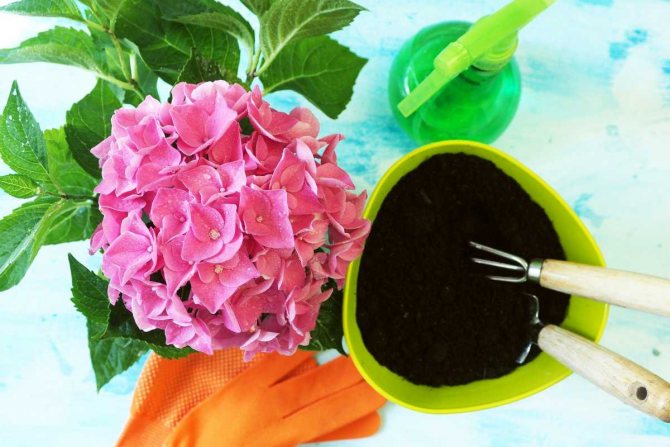

Hydrangeas are one of the indoor plants that are extremely sensitive to the reaction of the soil and its quality.
Shelter hydrangea for the winter
Towards fall, start preparing your hydrangea for winter. If the weather is dry, water it. remember, that hydrangea will tolerate frost betterif you received enough water in the fall. Do not forget to spray with Bordeaux mixture in the fall so that the branches do not mace in the winter shelter and to neutralize fungal diseases.
In the second half of October, when night frosts are already observed, hydrangea bushes are spud up to a height of 30 cm. While there are no severe frosts, the top of the bush can be covered with agrospan or perforated polyethylene film in two layers. In late October - early November, bend the branches of the hydrangea to the ground, cover with dry leaves, spruce branches. Place a box or box on top. They cover the hydrangea for the winter in the same way as roses.
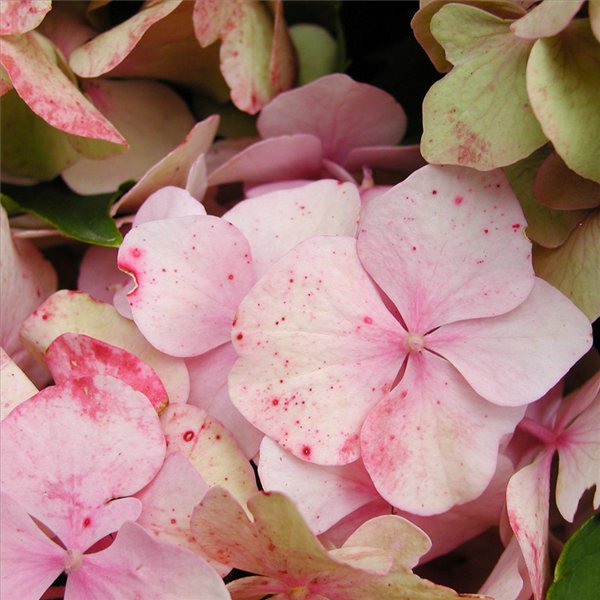

Transplant, containers and substrate
Unlike many indoor plants, hydrangeas should not be transplanted in early spring when they start to grow. The best time to transplant these beauties is after flowering and pruning. If you postpone the transplant until February-March, during the most important period for the preparation of flowering, the hydrangea will have to face new conditions and move on to adapt, because of which it may not bloom at all.
But the requirement to transplant after the plant fills the old pot with roots is better for hydrangeas to break. They are transplanted annually, grown in sufficiently compact containers that allow them to develop throughout the year. Hydrangeas prefer wide and shallow pots.
Hydrangeas are one of the indoor plants that are extremely sensitive to the reaction of the soil and its quality. Even the slightest differences from the preferred pH values or unusual deviations in the new substrate are manifested primarily in the colors of the plant: hydrangeas bloom differently in different conditions.
To fully appreciate the characteristics of the variety and the color scheme of the plant, it is worth growing hydrangeas only in a special substrate for rhododendrons. This is especially true for hydrangeas with a cold palette of colors - blue, purple, blue-violet shades. Any hydrangeas feel uncomfortable in soil, the pH of which goes beyond 4-5.
Hydrangeas are handled very carefully, without contacting the roots and without destroying the earthen coma. After planting hydrangeas, abundant watering is carried out. It is better to keep the plant in high air humidity, very “mild” temperatures and light until growth resumes and adaptation is complete. Drainage at the bottom of the tank is required.
Indoor hydrangeas prefer mulching the substrate - both clean peat and decorative mulch (which does not obstruct air access to the roots) are suitable.
Conditions and care required for a home hydrangea
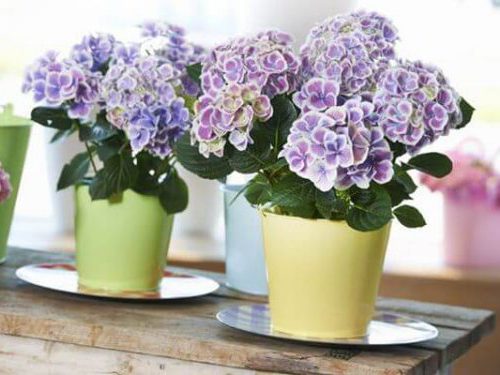

If you are going to enrich your collection with this flower, you need to proceed from the fact that caring for a room hydrangea at home should be aimed at creating an environment that would be as similar as possible to the life of a plant in the open air. Therefore, the hydrangea cannot be called a simple pet, you have to tinker with it, although there will be no outrageous difficulties either.
Lighting
During the growing season, especially during the period of flowering and active growth, bright, but always diffused lighting is necessary.Home hydrangea equally dislikes both darkness and sunburn. The best place for her is window sills and balconies of east or west orientation. Southern ones are also suitable, but with the condition of mandatory shading with a light curtain.
Temperature and humidity
This is one of the most difficult care elements to follow. The fact is that these plants do not like high temperatures. Even on summer days, it is preferable that the air is no warmer than + 22 ° C. This is not easy to achieve in our climatic conditions. Hydrangeas love soft, cool air, they are hot in our apartments. Therefore, in the summer months, the owners try to either move the pots of hydrangeas to the dacha, or leave them on open balconies, so that the flower "swallows" the night's coolness.
Attention! Keeping hydrangea on an open balcony, make sure that the wind does not "walk" there - these flowers are painfully tolerant of drafts.
When speaking about air humidity, many sources use the numbers "from 50 to 60%". In other words, hydrangeas need air that is not too humid, but much more humid than that observed in spring and summer in our apartments. Therefore, the flowers need to be sprayed regularly, especially on hot days. You can turn on a humidifier near them, put the container in a wide stand with wet expanded clay.
Watering and feeding
Hydrangea at home is a recognized "water-crust". Especially on hot days, she immediately reacts to the drying of the earthy coma. You need to water it with soft water, so that the substrate never turns out to be dry, even in the upper third. But if you are careful, then never miss watering: as soon as the earth begins to dry out, the leaves of the hydrangea wither, lose their elasticity, and this is immediately noticeable.
In the spring, as soon as the home hydrangea resumes its growth, it needs to be fed twice a month with complex fertilizers designed for flowering plants. This is especially important during flowering, when huge inflorescences literally suck all the juices from the plant.
Soil for hydrangeas
The substrate in which our heroine grows should be loose, light, slightly acidic, at the same time nutritious. From ready-made store kits, a mixture for azaleas or begonias is quite suitable. In general, caring for a homemade hydrangea at home is very similar to caring for an azalea. If in your floriculture "career" you have coped with an azalea, you will pacify the hydrangea all the more.
If there is a desire to prepare the soil mixture yourself, use the following approximate composition:
- sod land - 2 parts;
- leaf land - 2 parts;
- coniferous land - 1 part;
- high-moor peat - 1 part;
- coarse river sand - 1 part.
For mature, mature plants, a layer of good humus can be added on top in the spring.
Interesting! Hydrangea flowers can change their color depending on the acidity of the soil. If it is high (the soil is acidic), the flowers are blue, even blue. With a decrease in acidity, they turn white, and even turn pink (when the soil reaches an alkaline reaction). This property is actively used by flower growers, adding substances to the irrigation water that either acidify the soil or make it more alkaline. But for such a "play with acidity" you need a lot of experience and developed flair!
Transplant features
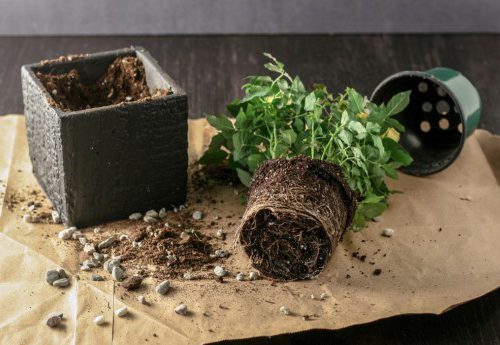

The root system of these plants is powerful, but tends to grow in width. Therefore, when transplanting, choose a container that is not deep, but wide. And the hydrangea will have to be transplanted annually, in the spring, otherwise it will bloom badly. The pot should be larger than the previous one, but not much, otherwise the plant will begin to “fatten”, growing juicy tops and new shoots, to the detriment of flowering.
Important! Each time you transplant, make sure that the ground level remains the same as in the previous pot. By deepening the hydrangea, you run the risk of provoking root rot.
After the transplant is made, do not water the new soil for several days, but spray the specimen abundantly with warm water.
Pruning
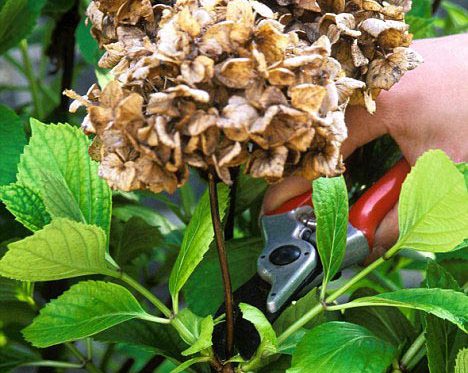

Cardinal pruning is carried out annually after flowering ends, before the dormant period begins. At this time, you need to remove all dried peduncles, old branches, shorten or even completely cut out weak shoots. Cut off strong shoots by about a third. If leaves remain on the branches, they are also removed before the dormant period.
In the spring, at the beginning of the season, the crown is also cut, but already much more modest. After waiting for the kidneys to wake up, you need to estimate their number. Remove dead areas, leave 5-6 eyes on strong branches. They will give large, beautiful inflorescences.
Dormant period
The most important time for hydrangea! It sometimes lasts up to six months, from mid-autumn to the end of March (but usually still 4 months). Here are its characteristic features:
- the temperature drops to +4 + 6 ° С;
- watering is significantly reduced, but care must be taken that the substrate remains slightly moist inside;
- the crown, as already mentioned, is strongly cut off even before the beginning of the dormant period;
- light is not needed at this time, so it is best to take the hydrangea to a cold, damp basement for the winter.
Without going through a proper rest, the home hydrangea will not bloom next season. In fact, this time is an imitation of a mild, cool winter, when hydrangeas lose their leaves and freeze for several months.
After the end of the dormant period (most often it is the end of winter or the beginning of spring), the pot is brought into the heat, watering with warm water begins.
Diseases, pests and problems in growing hydrangea
Indoor hydrangeas suffer only in the wrong conditions and with insufficient care. Spider mites and aphids usually affect bushes suffering from insufficient moisture, but rot - when the substrate is damp. Any deviation in temperatures, feeding, watering, lighting leads to a change in leaves and a slowdown in growth.
When taken out to the balcony and into the garden, the plant may be affected by powdery mildew. It is better to deal with problems by combining correction of conditions and treatment with insecticides or fungicides.
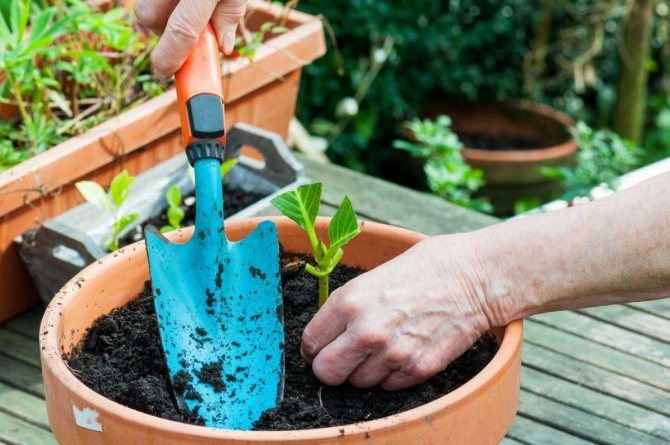

The only breeding method that is used for indoor hydrangeas is cuttings.
Disease and pest control
Broadleaf hydrangeas are often attacked by insect pests and various infections. The table provides examples of major pests and diseases, as well as control measures.
| Name | Manifestations | Control measures |
| Chlorosis | Yellowing of leaf blades | Acidification of the earth |
| Downy mildew | Oily yellow spots | Treatment with modern systemic fungicides |
| Rust | Red oval seals on the leaves | Removal of affected plant parts, treatment with modern fungicides |
| Septoria | Small round spots of off-white color with a brown border on the leaves | Removal of affected plant parts, treatment with copper-containing preparations. |
| Spider mites | Light dots on the leaves | Spraying with insectoacaricides. |
For the prevention of diseases, ornamental shrubs are treated with complex fungicides immediately after planting. And in the fall - Bordeaux liquid.
If you follow all the rules for the cultivation of hydrangea, then it will respond to the care with exuberant flowering, which will last the entire summer season.
Reproduction of hydrangeas
Indoor hydrangea bushes are rarely propagated, most often preferring to use garden plants as a "material". Meanwhile, only special indoor varieties retain their compactness, branchiness and are much better adapted to not being kept outdoors. If possible, then it is better to propagate initially indoor hydrangeas.
The only breeding method that is used for indoor hydrangeas is cuttings. To do this, use apical cuttings from young twigs, which grow actively in spring.Green cuttings root better than semi-lignified ones.
You can start grafting hydrangeas from January-February, the deadline is April. For indoor hydrangeas, the standard is a stalk from 8 to 10 cm long. Rooting is carried out in a peat-sandy substrate, with constant soil moisture and under a hood. Plants are planted in individual containers.
Separation of bushes, as well as separation of offspring on indoor bushes, is permissible, but only parts with at least 3 to 4 shoots can be separated. Plants do not tolerate contacts with their roots well and then adapt for a long time.
Garden bushes can also be propagated by layering to produce offspring that could be used in rooms.
Hydrangeas are rarely grown from seeds. Sowing is carried out superficially, under the film, with thinning and diving at the stage of the third leaf into individual containers.
Pros and cons of an ornamental shrub
Like any flowering plant, hydrangia has positive and negative qualities. The pluses include:
- There are so many varieties that every gardener can choose a plant to his liking.
- Ornamental shrubs can be propagated in different ways - by cuttings, layering, seeds and shoots.
- Flowers can change their color.
Gardeners believe that the plant has the following disadvantages:
- It does not tolerate the harsh Russian winters.
- Requires fertile soil, with a certain level of acidity.
Each gardener decides for himself whether it is worth planting an ornamental shrub on the site.
How to make flowers blue
Finally, here's some advice to help make pink hydrangeas bright blue.
Buy alum from the pharmacy, add it to the water at the rate of one teaspoon per 10 liters and water the plant several times in the spring. The same solution can be added to the bushes during flowering, if you see that the blue color has become less saturated.
This method is only suitable for varieties in the description of which a color change is provided. If genetics does not provide for this, no matter how much you acidify the soil, the flowers will not turn blue.
Landscape: use in garden decoration, flower beds
Hydrangea Candelite - variety description, planting and care
The use of macro hydrangea in the garden can be extremely varied: hedges, vertical gardening, group planting. Hydrangea looks good in combination with other flowering shrubs. Plantings of hydrangeas with clematis, irises, roses and lilies look spectacular.
The macrophile variety, like the variegated hydrangea, looks good in mixborders and in single plantings. Can be planted in tubs and pots. When choosing a macro hydrangea variety, they are guided by the area of the site, financial capabilities and their own preferences.
Hovaria series
A series of remontant varieties, one of the most resistant to frost and disease. The series is characterized by combinations of pink-red and greenish colors.
large-leaved hydrangea variety Love You Kiss
A very beautiful variety, blooming with white flowers with bright pink ruffles.
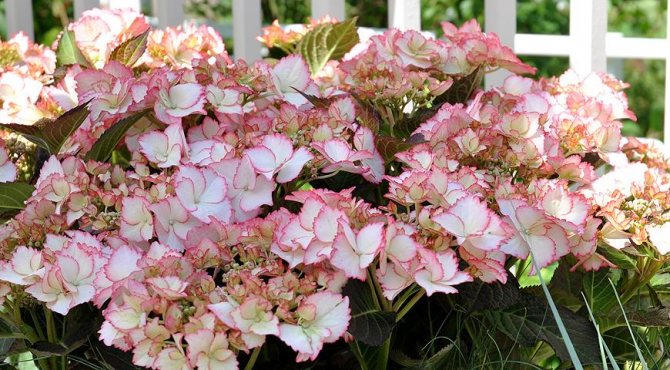

on the photo a variety of large-leaved hydrangea Love You Kiss
large-leaved hydrangea variety Hopcorn
A variety of hydrangea with dense inflorescences of flowers with rounded petals. The color of flowers in alkaline and neutral soil will be dark pink, in acidic soil - violet-blue.
large-leaved hydrangea variety Hobella
A fairly new variety, changing its color from pale pink to cherry red. The transition from one color to another goes through a greenish tint.
large-leaved hydrangea variety Riple
Quite large, up to 1.2 m in height, with very strong shoots. Differs in large white-pink globular inflorescences.
large-leaved hydrangea variety Sweet Fantasy
The bush is dense. Variegated flowers: pink with red splashes. The foliage is yellow in autumn with red spots.
Pros of hydrangea macrophylla
Large-leaved hydrangea has become the standard among different types of hydrangeas. She has very showy hats, attractive bright foliage.This is a real decoration of a garden, a summer cottage, a city flower bed and even a window sill. The main trump card of macrophile is a wide selection of shades. This plant is able to change the color palette depending on the soil in which it grows, what fertilizing it is fertilized with and what water it is watered with. In very acidic soil, white and pink caps can turn blue, blue, purple. Today, you can safely purchase macrophiles for garden plots, new varieties have the following advantages:
- better tolerate harsh winters if properly covered;
- recover quickly in spring;
- resistant to diseases and pests.
What to do with potted hydrangea in spring?
Around the end of March, the overwintered hydrangea must be removed from the basement, spilled with warm water and fed. If necessary, the bush can be transplanted into a more spacious flowerpot, and after watering, it must be mulched in order to delay the evaporation of moisture. Before "moving" to the street, the pot needs to find a bright place in the house.
For feeding, it is better to use a special complex fertilizer for hydrangeas of prolonged action (in granules). Coniferous litter or pine bark is well suited as mulch - rotting, it additionally acidifies the soil, and hydrangea loves it.
It is possible to take out a hydrangea into the garden not earlier than the end of April, or even in May, but at first, at night, take it into the house or cover it with agrofibre so that the bush does not suffer from recurrent frosts.
Particular attention should be paid to the location of the hydrangea in the garden, because it does not like too bright lighting, from which the flowers fade. As long as there are no buds, the east side is best. And during flowering, it is worth completely removing the bush under a canopy so that the sun hits it only in the evening.
Preservation measures for flower buds on branches
In order for macrophile bushes to bloom profusely, you need to take precautions to save the kidneys.
- Cover the bush every year before winter. This will allow you to keep intact last year's shoots with buds for flowering.
- Water and feed the plant optimally. The bush will gain strength and winter well.
- Prune the shrub correctly, do not overdo it.
- Look for varieties that bloom even under adverse conditions.
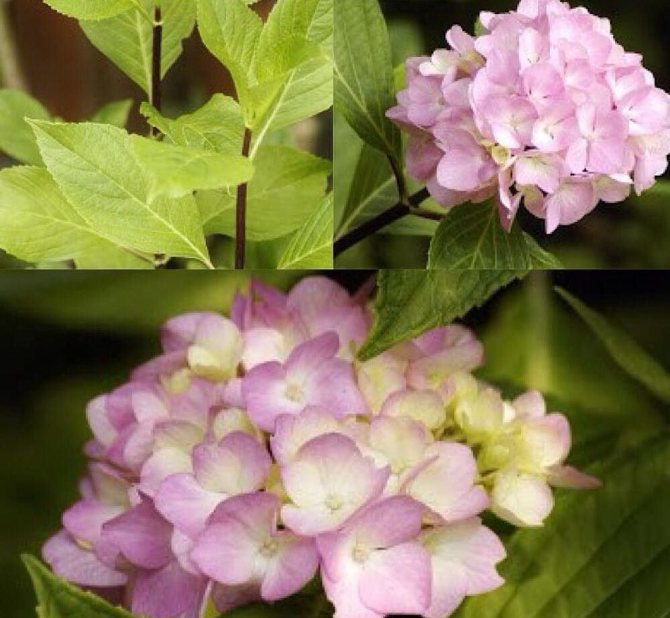

Description of the species
Hydrangea is a plant of the saxifrage family, it has from 30 to 80 species. Bushes can reach 4 meters in height, and vines - up to 30 meters or more. There are both deciduous large-leaved species and evergreens.
Interesting! The plant was named after the princess of Ancient Rome. Botanists gave it the official name "Hydrangea", which means "vessel of water". In the 17th century, the hydrangea was brought to Europe by French travelers from the island of Mauritius, returning from a voyage around the world.
Rough macrophylla hydrangea (hydrangea macrophylla) is a special species that can grow both in the garden and indoors. This miracle was brought from China in 1821. By the 70s, breeders had bred about 120 different hybrids, but many of them did not take root in cold winters and were grown as house plants.
The bushes have large leaves with denticles along the edge. The inflorescences are spherical in shape, they come in various shades: from white to dark purple. The color depends on the level of acidity of the soil: on soils with a neutral pH level, the flowers are white or cream, lilac or pink flowers grow on alkaline soils, purple or blue on acidic soils. Other species have the same feature (hydrangea Variegata, hydrangea Selma large-leaved). Hydrangea blooms all summer, and in closed greenhouses - in winter.
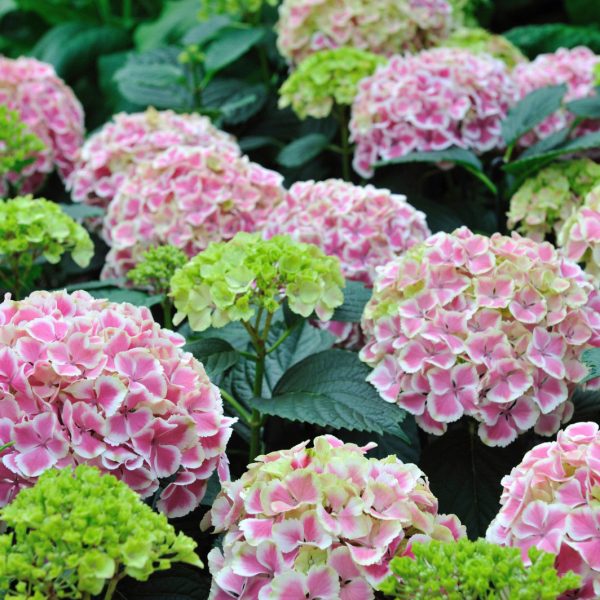

Hydrangea Macrophila
Forever & Ever Series
Over time, another commercially successful Forever & Ever series was developed from the Early Sensation variety. Now it consists of varieties Early Sensation (trade name Forever & Ever Pink / Blue), Red Sensation, White Ball, Pepermint, Fantasia. The varieties can withstand temperatures down to -20 ... -24 ° C.Even with light cover, the plants are quite capable of surviving the winter without serious problems.
large-leaved hydrangea variety Fantasia
A repairing variety with a unique color combination: from light green to bright green, red and raspberry.
large-leaved hydrangea variety Red Sensation
The name translates as "Red Sensation". Burgundy-red inflorescences, when artificially stained, can change color to purple-burgundy.
The bush is compact, 60–90 cm high. The inflorescences are spherical, 10–12 cm in diameter. The flowers at the beginning of flowering are bright scarlet with a brilliant tint, by autumn they acquire a duller pastel color in burgundy tones. Hibernates under cover.
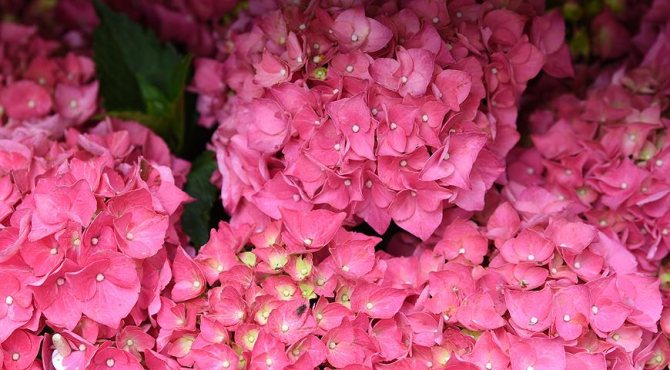

on the photo a variety of large-leaved hydrangea Forever & Ever Red
large-leaved hydrangea variety Peppermint
Delicate pink petals with a white border around the edges, inflorescences reach 20 cm in diameter.
A miniature bush 60–70 cm high. It is frost-resistant, does not need shelter.
Also popular from the same series are the snow-white White Ball and the bright blue Blue Heaven.
Care for large-leaved hydrangea in spring: feeding and pruning (with video)
When caring for large-leaved hydrangeas, plants need to be fed several times during the season. In the spring, a complex fertilizer containing nitrogen, phosphorus, potassium and the necessary trace elements is mandatory introduced into the trunk circle. If you do not feed large-leaved hydrangea in the spring, you can hardly count on abundant flowering. It is convenient to use special mixtures of nutrients designed specifically for hydrangeas, they gently acidify the soil, creating favorable conditions for the life of the bush. Special fertilizers for hydrangeas, "Green Bool", "ECOstyle", have proved to be excellent. You can also use fertilizers for rhododendrons and azaleas to feed large-leaved hydrangeas. Hydrangeas respond well to feeding with herbal infusions. Two or three buckets of nutrient solution are poured under an adult bush.
In the first half of summer, nitrogen and potassium should prevail in dressings. In the second half of summer, fertilizing with potassium and phosphorus is repeated 1-2 times, not including nitrogen in the mixture, in order to create optimal conditions for the plant to prepare for winter. At the end of August, all feeding should be stopped. It is strongly not recommended to bring ash and lime under the bushes. Hydrangea does not tolerate drought well, so the soil at the base of the bush should always be moist, but stagnant water is also harmful. It is recommended to mulch the soil in spring with peat, bark, pine needles, straw, grass.
In the spring, there is no need to rush with pruning large-leaved hydrangea, even if the branches at first glance look dead. Dry-looking buds can wake up even in late May - very early June. Only then it will become clear which of the branches are really inanimate. At this time, when pruning large-leaved hydrangea, all dry and weak shoots are cut out. A hydrangea bush over 5 years old can be rejuvenated by cutting 1/3 of the old shoots to ground level.
If you need to form a bush, be prepared to do it for two seasons. When caring for large-leaved hydrangea in the spring of the first year, the main growths are shortened to strong buds, weak shoots are removed. In autumn, several strong growths are formed, and on the main shoots there are many lateral branches. Weak and breaking the symmetry of the bush are cut from them.
Watch the video "Pruning a Large-leaved Hydrangea" for a better understanding of how to shape a bush:
In the second year, inflorescences are formed on last year's increments. New strong shoots grow in the lower part of the bush. After flowering, you need to cut off the faded shoots into strong buds and remove all weak shoots. This scheme is repeated in the following years.
Next, you will learn how to cover a large-leaved hydrangea for the winter to protect the plant from the cold.
Humidity
Hydrangea calmly tolerates the usual humidity in the apartment, but it will be grateful to you for periodically washing the leaves under the shower from dust.Leaves can also be wiped with a damp cloth.
If the flower is close to a working battery, it is good to introduce a leaf spray. In spring and summer, hydrangea can be sprayed at will, not too often.
- Important: Spray the leaves, not the flowers, and use standing water.
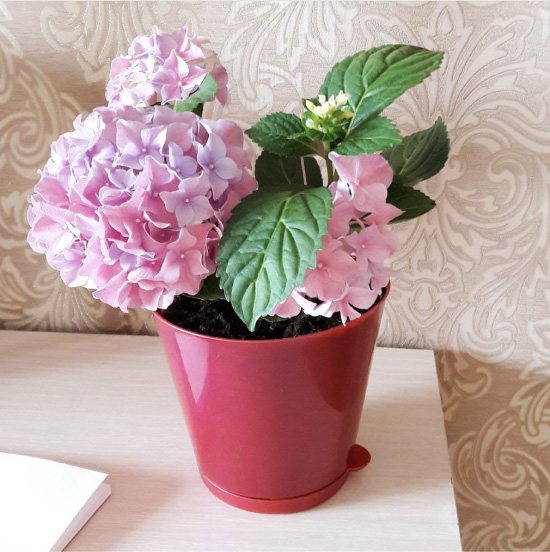

Useful properties of hydrangea
Possessing a positive, light energy, the flower spreads calm serenity. From the position of Feng Shui, it has many useful properties:
- extinguishes mutual hostility, softens conflict in communication;
- at home normalizes family relations, helps to achieve mutual understanding;
- contemplation of hydrangea relieves mental fatigue after an incident or stress, helping to calm down;
- a flowering plant relieves of bad mood, negativity of others, bad thoughts.
On a note. In order for the beneficial properties to be fully revealed, the flower is selected the optimal conditions for growth.
Care
Hydrangeas bloom from developed buds on last year's shoots, they are not pruned in spring. The abundance of flowering depends on the number of shoots produced last year. Pruning should be minimal (shoot ends up to the first healthy bud). Magnificent inflorescences and significant leaves make up a heavy burden for the shoots, after winter they lie on the ground, the leaves must be removed in advance so as not to interfere with the care work. Dry inflorescences from the previous season, harvested in spring, also deformed and diseased shoots.
Fertilizers are applied in spring until the first half of summer. Fertilizers enhance the growth and development of shoots; for proper wintering, shoots must stop growing and become woody.
Location and soil
In nature, hydrangea grows along the banks of reservoirs and on the edges of forests - hence its addiction to moisture, diffused light and slightly acidified soil.
Set aside a draft-free location for the shrubs, located so that the sun hits it in the morning and evening. Hortense does not like the heat of midday and it is better that from 11:00 to 16:00 it is in partial shade. The best option, taking into account these requirements, is the corners of the garden, oriented to the west and north.
The plant prefers a well-structured soil, loose, rich in organic matter, with an acidic pH (from 4.5 to 6 units).
Hydrangea has a special relationship with water. She likes to drink in abundance, and you need to make sure that the soil always remains moist. But the shrub does not tolerate root locking, so take care of good drainage when planting.
Shrub origin
Large-leaved hydrangea belongs to the Hydrangea family and appeared in Europe more than 250 years ago. At first, the delicate plant, brought from Japan, was grown only as a greenhouse crop, but over time, varieties for open ground appeared. Since the first originators of hydrangea were the French, the shrub still remained thermophilic and could grow only in a mild European climate.
The real boom of garden hydrangea begins in the 20th century, when they began to cross it with other species. Dozens of new varieties and hybrids have appeared, including cold-resistant ones, capable of withstanding frosts down to -18 ° С.
Temperature
Indoor hydrangea lives up to its name, feeling comfortable at normal temperature in the apartment (provided there is fresh air). In cold weather hydrangeas, to stimulate flowering in spring, it would be useful to create conditions that resemble the wintering of its garden relatives.
For this, the pot is placed in a very cool room (basement, glazed balcony, veranda, etc.). At the same time, watering should be greatly reduced, but not completely canceled: do not forget about the hydrangea's love for water.
When to transplant hydrangea after purchase?
Most flower growers go in search of new green pets after the end of winter.Towards the end of spring, hydrangea also appears in nurseries or flower shops - seedlings are usually sold in containers, and often even together with buds. Having acquired such a bush, you do not need to do anything special with it: in such a pot the plant may well stay until the end of summer, moreover, in the open air, and although the soil is transportable, for the first time it will cope with its task. Naturally, you need to monitor the moisture and prevent the soil from drying out.
But with the arrival of autumn, already at the beginning of September, it will be necessary to prepare the hydrangea for wintering indoors, and at the same time transplant it.
Hydrangea development calendar
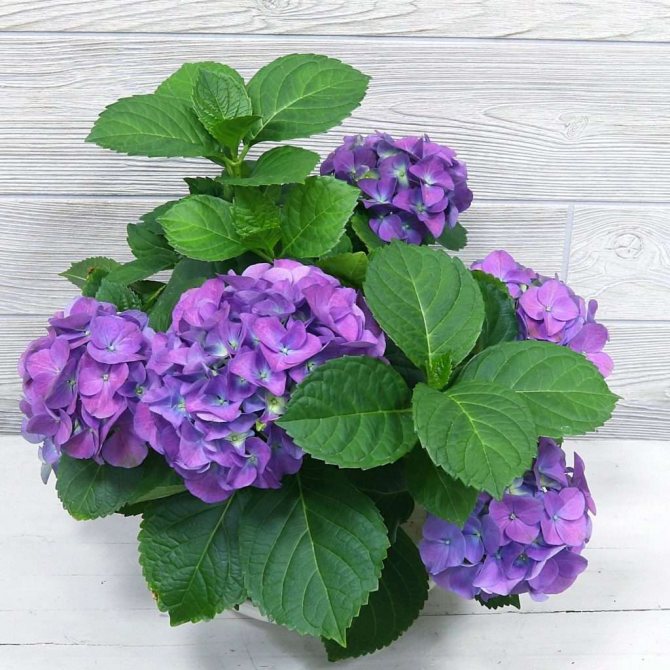

When asked whether it is possible to grow a garden hydrangea at home on a windowsill, there is a consensus - it is possible and necessary. Every gardener should know the approximate calendar of the development of culture:
- December-January the plant is dormant. It is kept at a temperature of 6-9 degrees.
- Awakening begins in February.
- March-April is a period of active development.
- May-October - bud formation and blooming.
- In November, the plant prepares for the winter season.
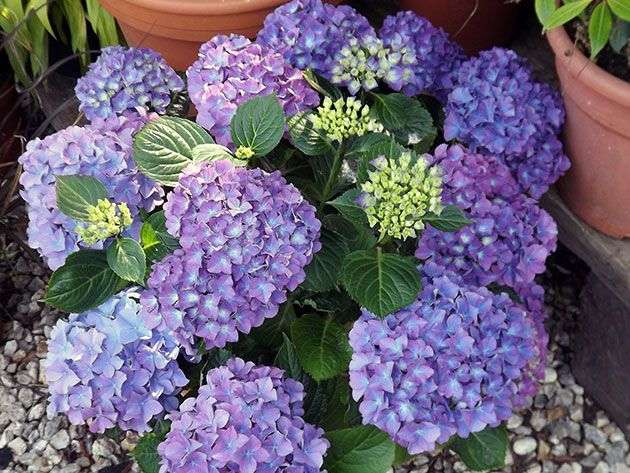

A beginner should know how to grow a bush in an apartment, how to make an indoor hydrangea bloom, how to ensure wintering for it. Only the competent actions of the grower will lead to lush flowering and healthy growth.
Hydrangea Blue Bodensee in landscape design
In the open field, landscape designers and specialists in landscape gardening use Bodensee hydrangeas as a curb plant, planting it along paths, alleys, next to building walls and fences. These flowers can be used as colorful accents of an unusual blue hue, they are included in compositions, grown in groups or singly.
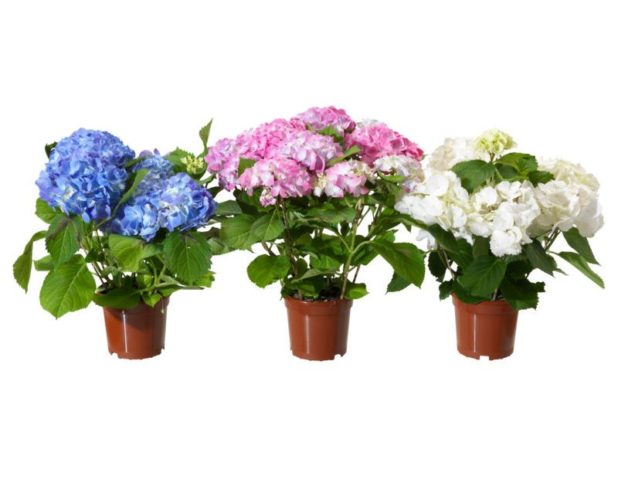

Large-leaved hydrangeas can be grown as pot plants
Bodensee hydrangeas, grown as potted plants, are used to decorate architectural objects, halls, halls, galleries, and are planted in flowerpots and pots.
Possible growing problems
- Hydrangea suddenly fades... This can be caused by a lack of water or too high a temperature. Soak the clod and move the plant to cooler conditions.
- Yellow leaves... Yellowing of old leaves often occurs from waterlogging. If the young leaves are yellow, it could be caused by too hard watering. Normalize watering regime and use only soft water.
- Brown dry leaves... The reason is hot dry air. Increase the humidity and move the plant to cooler conditions.
- The inflorescences have changed color... This is due to a change in the acidity of the soil. In a shift in acidity to a neutral value, the flowers turn pink, and when the soil is acidified, they turn blue.
- Brown spots on the leaves can be caused by gray mold (Botrytis). The disease is facilitated by the long presence of water on the leaves of the plant. Remove diseased leaves, treat with fungicide, improve ventilation in the room.
- Large black areas on leaves... The plant has been exposed to frost or leaf spray. Hydrangea does not tolerate severe frosts, do not expose it to negative temperatures, do not use leaf varnishes.
- Matt white or gray-white bloom on leaves is caused by a fungal disease - powdery mildew. Plants oppressed by poor conditions are most susceptible to it. Remove heavily affected leaves, treat with a fungicide (Skor, Topaz, etc.), change the conditions of detention.
Photo: Rita Brilliantova

